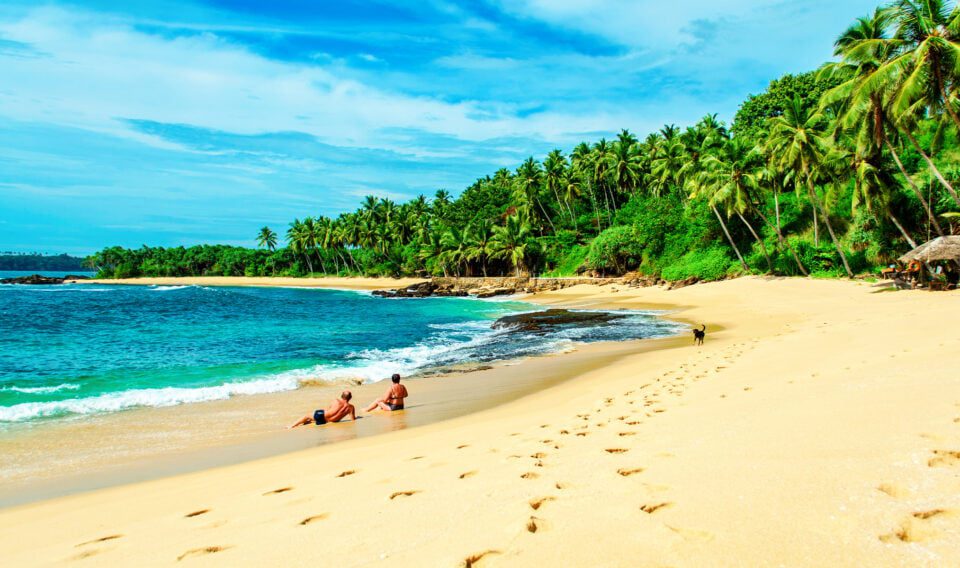Sri Lanka is rich with cozy beach spots. On this paradise island, the average air temperature year-round is between 28-32°C, with water temperatures ranging from 27-29°C. The peak tourist season is from November to April.
There are numerous water sports centers, sports facilities, wellness, beauty, and massage salons. Experienced travelers recommend choosing Sri Lankan beaches based on the terrain and nearby attractions: museums, temples, exotic bird and animal farms.
This approach helps combine the pleasant with the useful. For example, many beach areas border turtle farms, where you can admire giant turtles and bring health, wealth, and success into your life. Yes, the local turtles have a magical influence on people.
Naturally, tourists who take selfies with them often keep the photos as cherished talismans.
Bentota
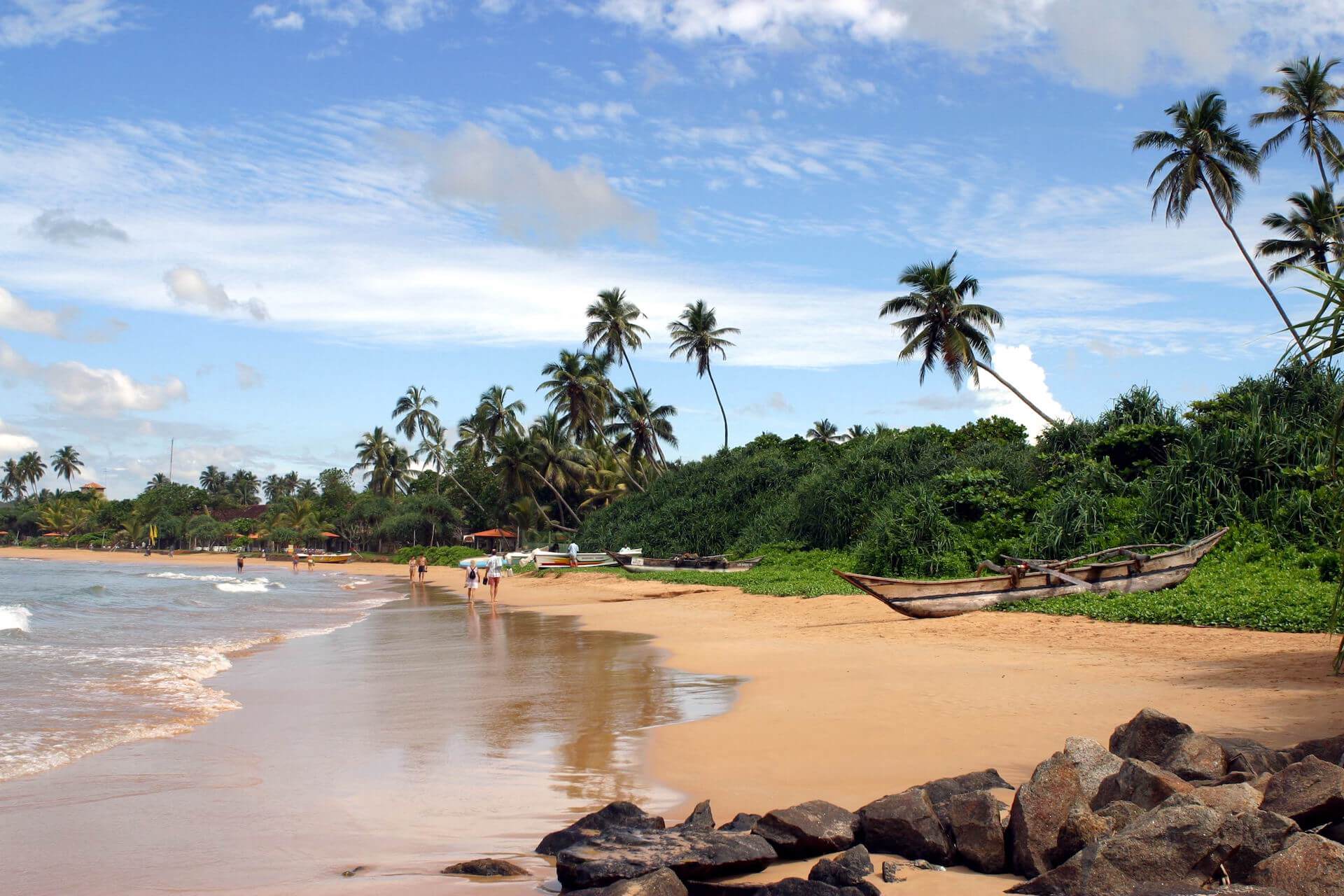
This resort in the southeast of the country attracts “package tourists” and families with children. Prices here are higher than in neighboring provinces, but the service level is luxurious even in the smallest hotels, restaurants, and entertainment venues.
Europeans and Russians prefer to hold wedding ceremonies and honeymoons in Bentota. Celebrations for newlyweds and romantic dates always turn out to be extraordinarily romantic. Cozy, quiet spots on the coast with white sand are perfect for leisurely walks. The hotels are separated by tropical trees, making the buildings on the shoreline completely hidden in greenery.
Bentota’s beach area consists of two parts. The northern part, called “Paradise,” is less crowded compared to the southern part. “Paradise” is better for those who enjoy quiet relaxation. There are no crowds of tourists, and grandiose loud entertainment is rare. However, there are facilities for water sports equipment rental, a paramotoring club, a windsurfing center, and a Buddhist temple (often referred to in tourist brochures as a Meditation Center).
The southern zone differs from the northern zone in that it borders elite hotels and the largest (by local standards) entertainment venues. Colorful festivals and noisy events frequently take place here. The water entry in this part of the coast is gentler (the northern beach has a similar section only in the middle). And a pleasant bonus: both parts of Bentota are free to visit.
Mirissa
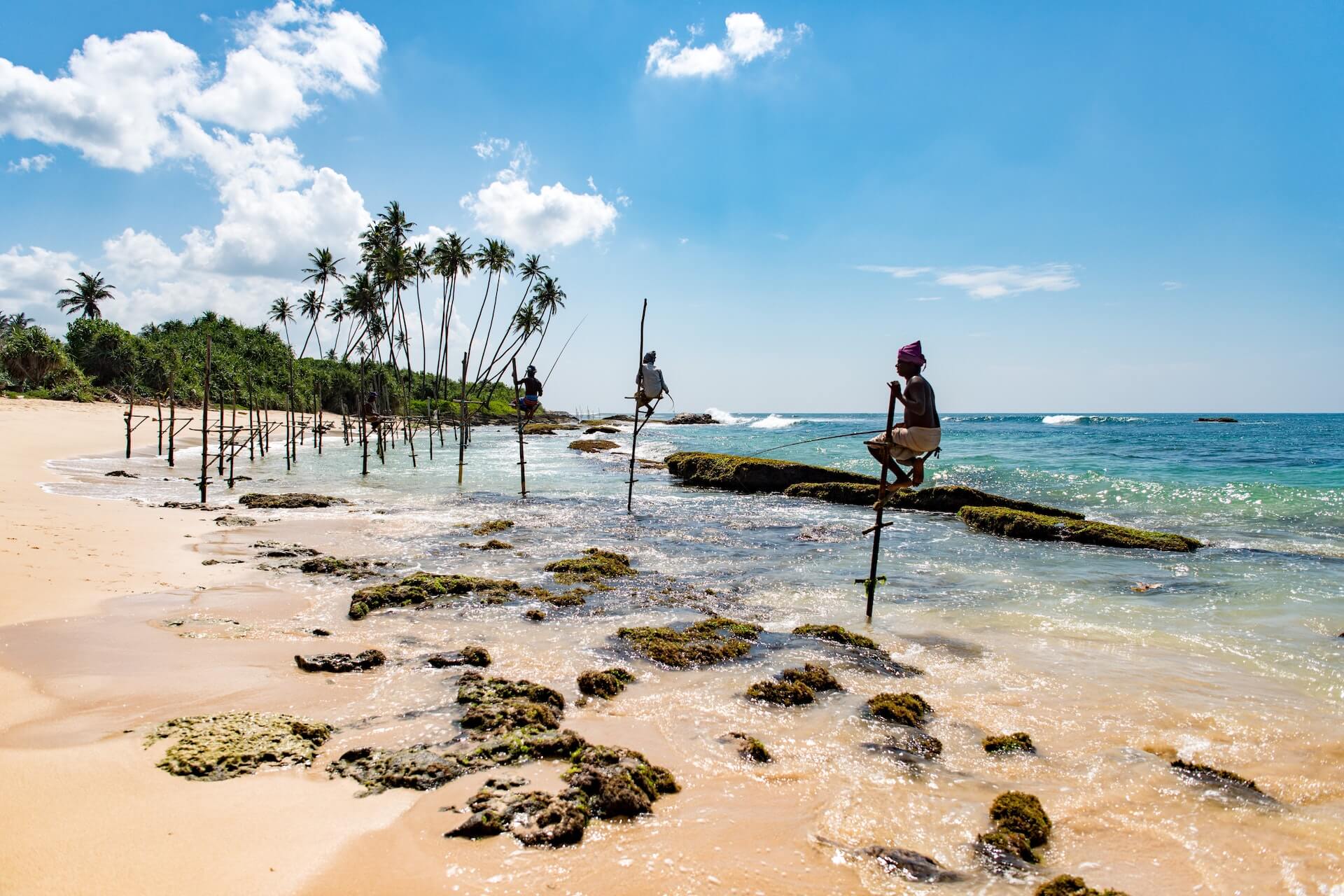
This recreation area can be compared to a small Mecca for surfers and divers. The village of the same name in the south of the country is usually uncrowded. Mainly water sports enthusiasts come here.
Families with children choose Mirissa for its healing pinkish sand and a decent atmosphere. Adult establishments (18+) are located on the outskirts and do not aggressively advertise their services, thus not annoying puritanical travelers.
If you plan to surf in Mirissa, it’s better to choose the central part of the beach zone initially. It is specially equipped for surfers. And one more thing: avoid swimming near large boulders because there are many sea urchins whose spikes can cause severe pain if they pierce the skin.
The most famous natural attraction in this part of the coast is Parrot Rock. It’s a natural observation deck and an excellent place for selfies in good weather. If a storm starts, leave the rock immediately, as it becomes dangerous. In such cases, the waves can easily knock careless travelers off their feet and drag them into the ocean.
Mirissa is famous for its Ayurvedic salons and beach cafes with reasonable prices that do not compromise on service quality. This place is also ideal for boat trips to admire the reefs and take mini-journeys into the open ocean to see dolphins and blue whales.
Unawatuna
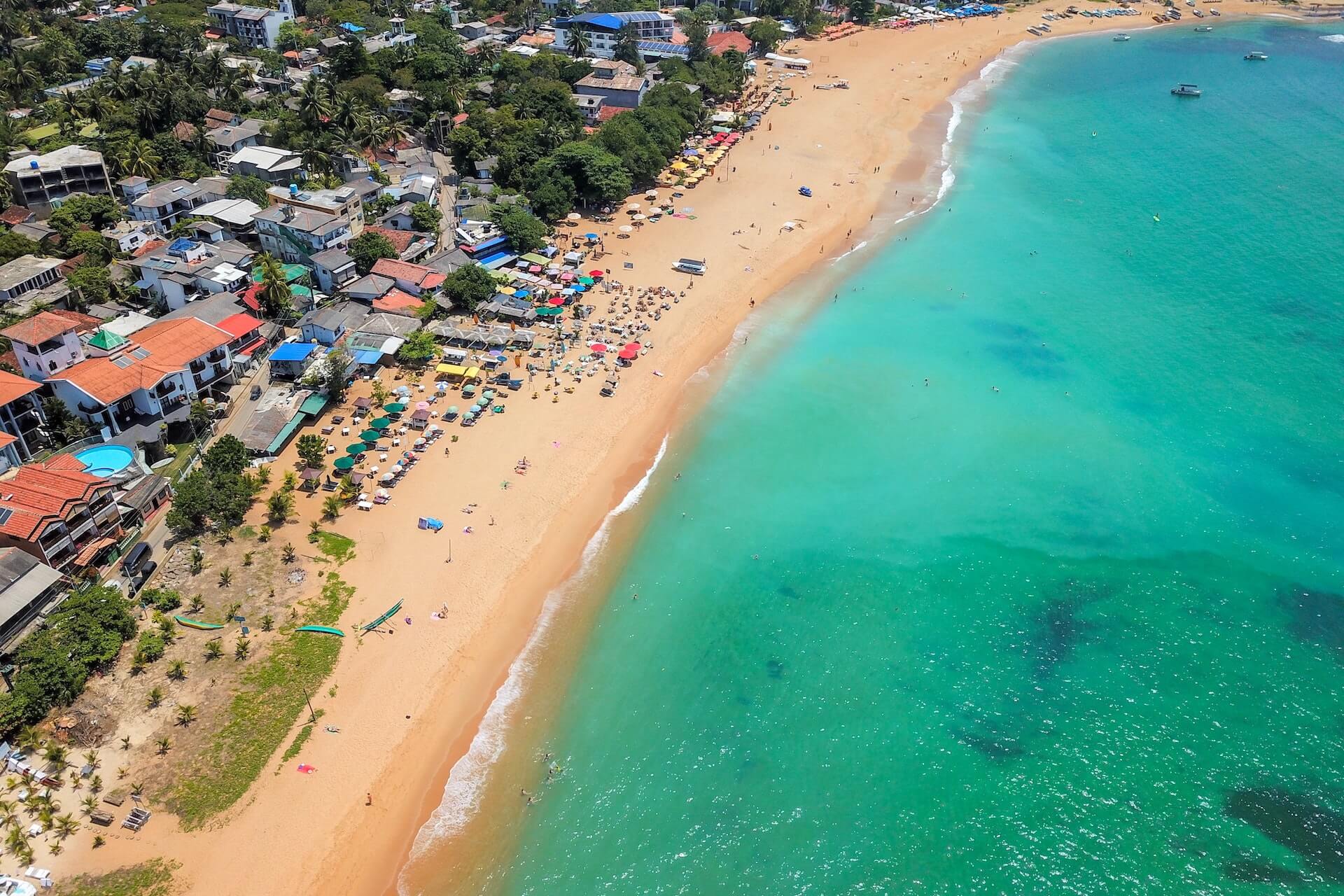
This recreation area is located in the southern part of the country. This semi-circular bay is surrounded by jungles on land and reefs in the water. Its key features include the absence of strong currents and safe, gentle water entry throughout. The main attractions of Unawatuna are a giant Buddha statue, an ancient Buddhist temple, and a football field.
The local coastal strip impresses with its cleanliness and neatness. Many foreign tourists who come here for 2-3 days end up staying for several weeks. The variety of hotels and guesthouses along the coast is excellent, and the range of prices makes it easy to find an option that fits your budget and comfort requirements.
The only downside is the overly persistent souvenir vendors who are even noisier than the begging monkeys.
Unawatuna was once among the top ten best beaches in the world, but natural disasters have negatively impacted its coastal strip. To restore its former glory, local authorities and business owners have redeveloped the area. The beach area has become larger and more accommodating due to the formation of land sections from brought-in sand with a delicious coffee-with-milk color.
Hikkaduwa
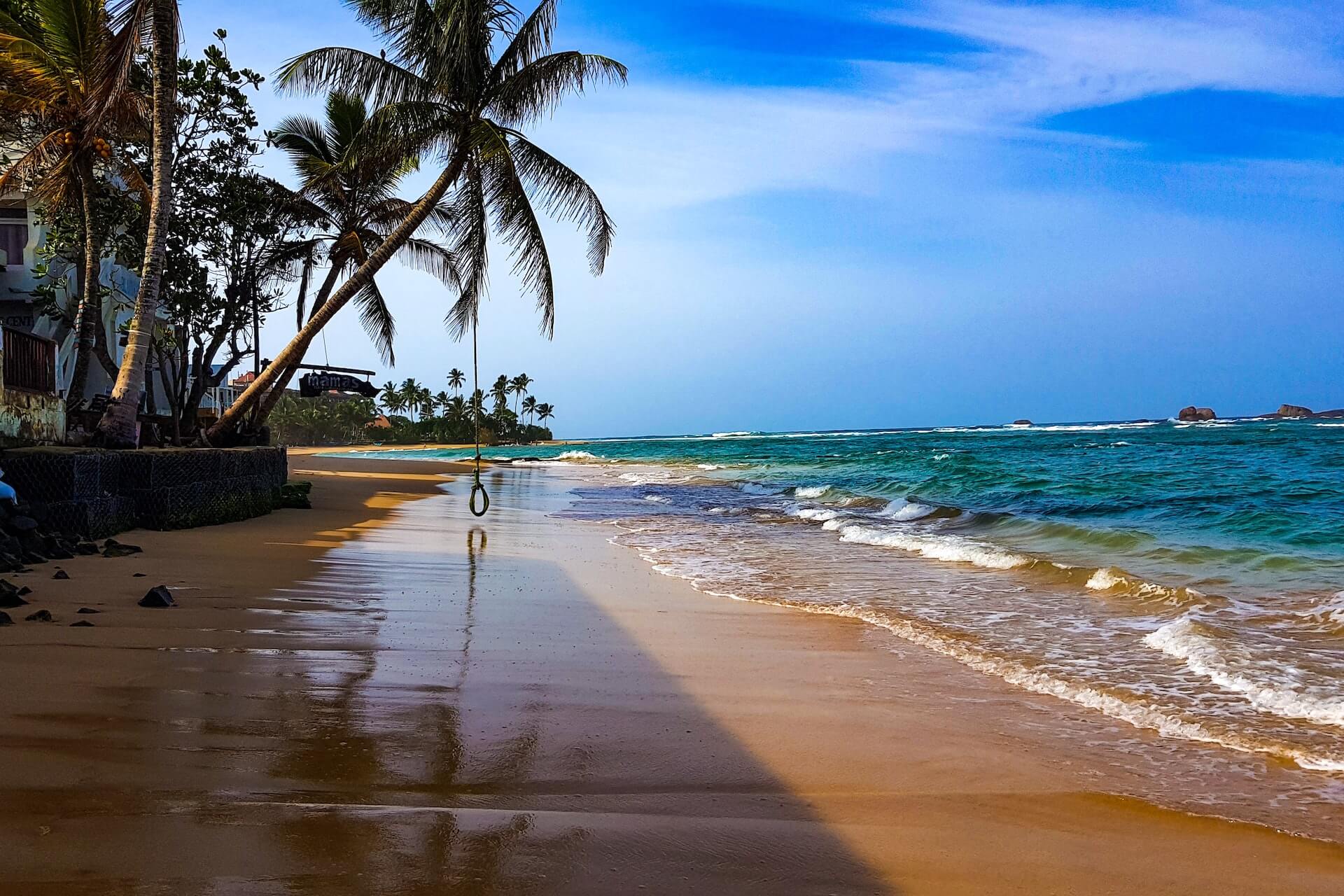
This resort in the southwest is usually chosen by travelers who want to swim with giant turtles and admire marine life living on the reefs. Interestingly, this place has an unusual European vibe for Asia.
It all started years ago with hippies. Following them, foreign investors and major Sri Lankan entrepreneurs took an interest in Hikkaduwa. They created something between a European, American, and Asian resort.
Hikkaduwa boasts numerous clubs, restaurants, cafes, sports equipment rental points, and jewelry shops where you can buy beautiful gold and silver jewelry. As for the color of the sand, the choice is not limited to one shade (much to the delight of alternative medicine enthusiasts). Countless yellow and coffee-colored grains of sand form monotonous sections of land in the most bizarre shapes.
For surfers, the resort offers year-round excitement… An important note: Hikkaduwa has one of the highest levels of humidity and rainfall on the Sri Lankan coast. If you plan to stay here from May to September, be prepared for prolonged tropical downpours! After them, the water becomes murky, and the waves take a long time to calm down.
The fact that the recreation area is right in the city center has left its positive mark on its infrastructure. Markets, supermarkets, and shops are all within walking distance, allowing you to easily combine hours of relaxation with endless shopping.
Large-scale music festivals are often held here, where you can hear original, folk music and interesting arrangements of European classical pieces with an Asian twist.
Tangalle
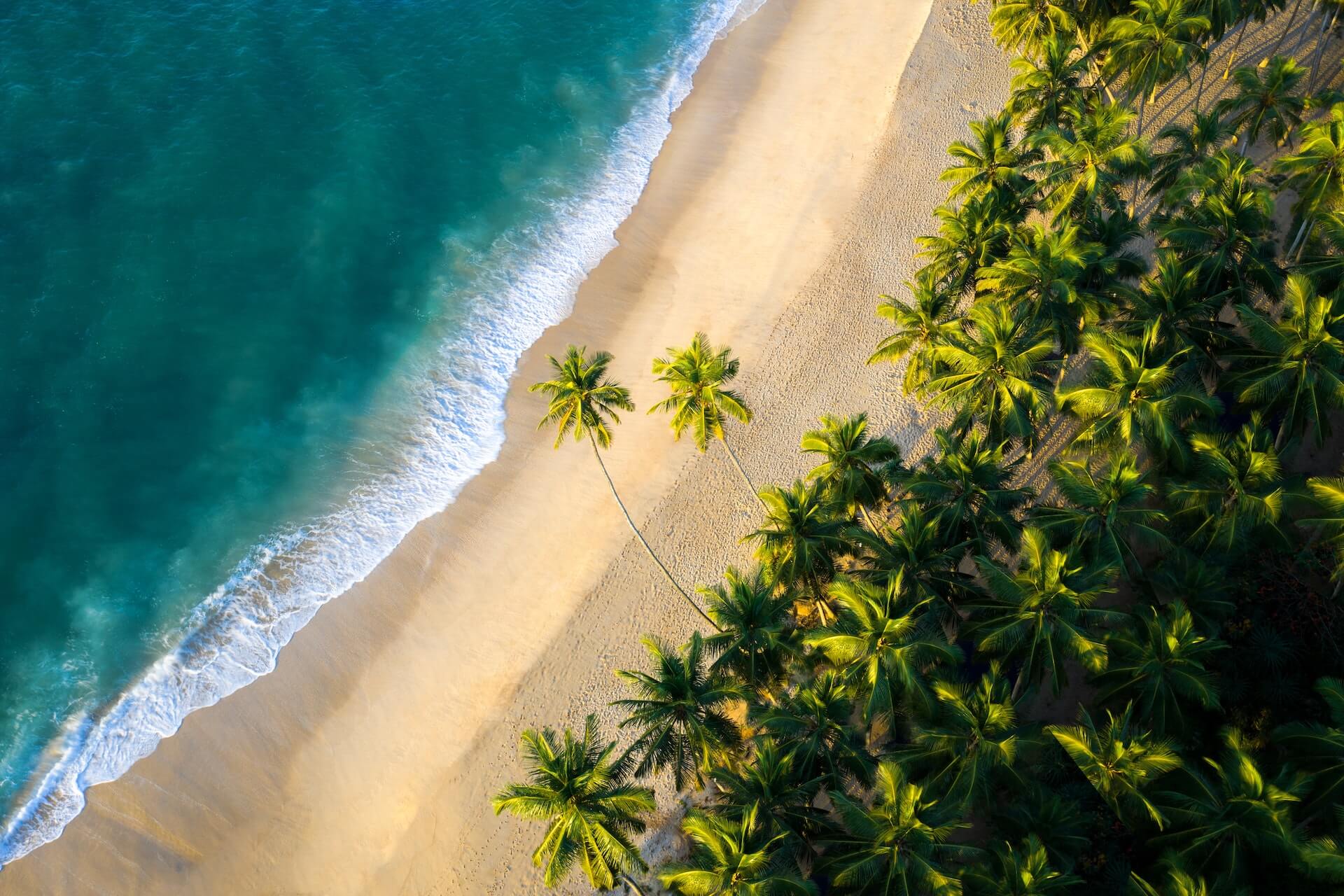
Located in the southernmost part of the country, Tangalle has a coastline formed by rocks that stretches for 9 km and creates many lagoons, perfect for small boat or kayak trips. In terms of the ocean, it showcases its full power, washing ashore mountains of golden sand. Strong waves, steep slopes, and fast currents do not make for serene swimming.
Visitors come here to bask in the gentle sun and rest in peace away from the city chaos. You can walk along the shore for hours without meeting another soul. In the evenings, your only companions will be the sea turtles coming ashore to lay eggs. A huge advantage of Tangalle is its proximity to Yala National Park, which spans 1,300 km². In these tropical jungles, you can participate in a “jeep safari” and see leopards in their natural habitat.
Negombo
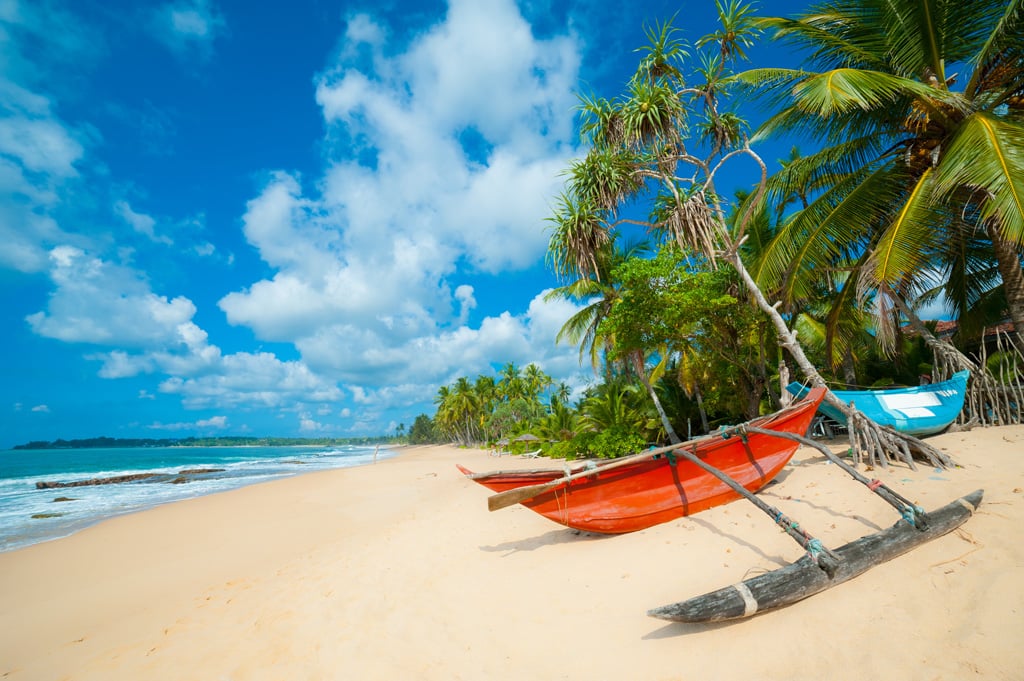
Opinions about this place on the west coast of the Republic vary greatly on the internet. Some tourists praise the resort area and invite everyone to visit, while others express dissatisfaction with its infrastructure and strange service levels. Who is right?
First, the beach is open to visitors around the clock, and entry is free. All necessary amenities (including sun loungers, umbrellas for rent, toilets, changing rooms) are available. There are no stones to hurt your feet, but there are no palm trees to hide from the sun.
The influx of tourists is constantly high, and accommodation prices are quite reasonable. Travelers usually stay here for a day or two before moving on to other provinces. This bustle can be frustrating for those who prefer quiet, leisurely relaxation.
An important note: the recreational area is very popular with locals who come here for picnics, fishing, and sports. Few of them swim (and almost none undress), so the sight of light-skinned tourists bathing draws a lot of attention from the locals (as if they were a natural wonder!).
So, while the sand is excellent and the water entry is convenient, the cars, fishing boats, and trade stalls, along with the shocked local residents, can irritate picky tourists.
Mount Lavinia
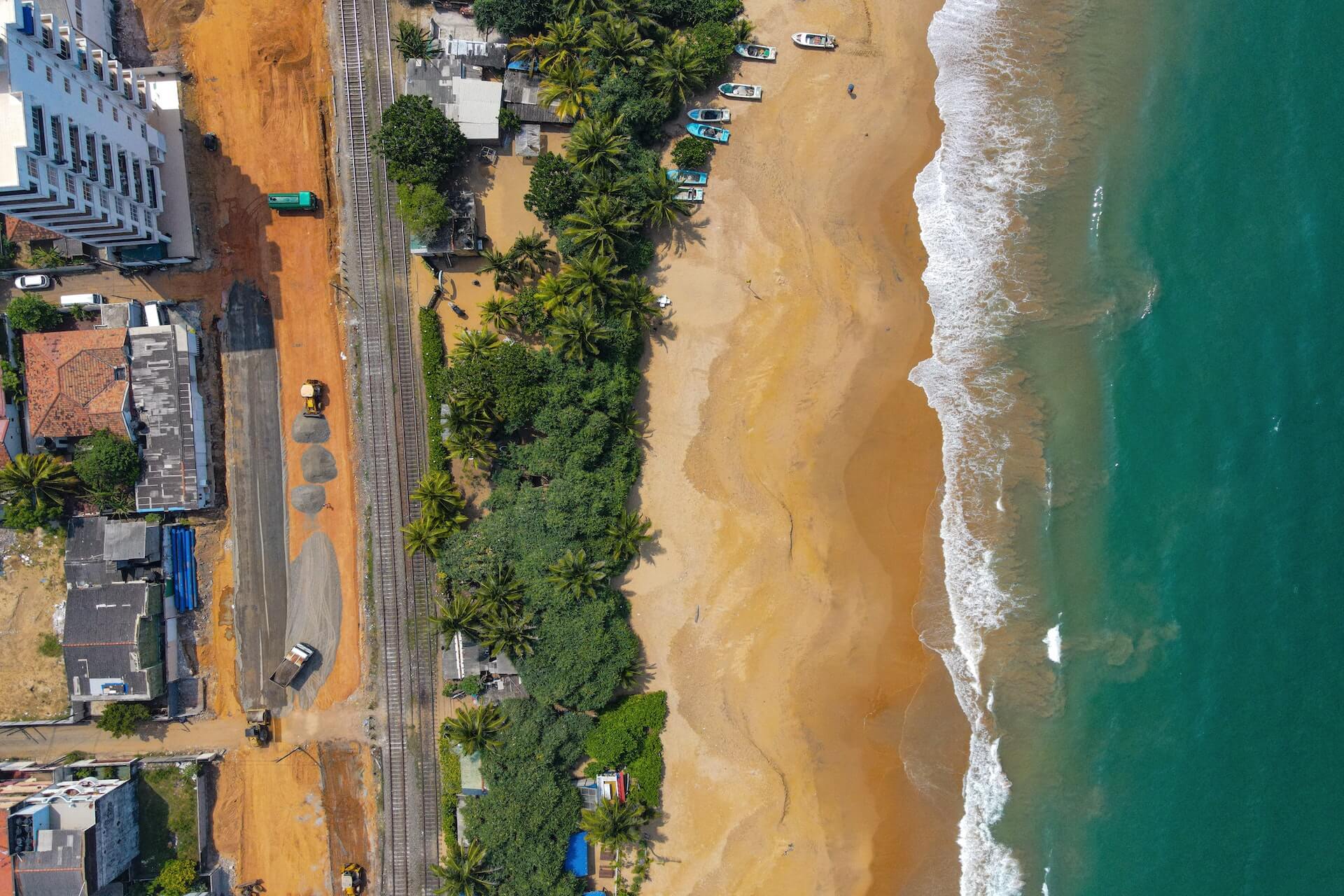
Located near Colombo, this place is considered one of the best beach zones in the world and a worthy rival to Unawatuna. The first resort has a more developed tourist infrastructure. During holidays, entire families of Sri Lankans come here for picnics, creating a real invasion.
The beach territory is well-zoned: restaurants and shops have designated areas, so vendors and food hawkers do not interfere with the relaxing tourists.
An experienced traveler’s tip: if you want to feel like a British governor, book a room and stay at the Mount Lavinia Hotel. It is an expensive pleasure, but this elite establishment is a real old mansion, a historical monument, and a symbol of love.
Long ago, a British official (Sri Lanka was then a British colony) fell in love with a beautiful Sri Lankan woman and ordered his residence to be built near the village where his beloved lived. The local Cinderella story did not end with a wedding, but the mansion became one of the most romantic places on the planet. However, locals will honestly warn you that ghosts haunt it.
Another note: from Mount Lavinia, you can watch one of the most beautiful sunsets in the country. The coastline offers views of the changing ocean expanses and city skyscrapers. This is where primordial nature and modern human civilization meet symbolically, creating a blend of natural and man-made beauty.
And don’t forget to visit interesting landmarks near the recreation area: a turtle farm, a zoo, and the fish-filled Bolgoda Lake.
Wadduwa

The sand in this resort area has a special golden hue. Folk medicine enthusiasts believe that touching it helps relieve stress, headaches, joint diseases, and musculoskeletal disorders.
The well-maintained beach line here stretches for 9 km. It is not all built up with hotels, which is a downside. Unused sections are turned into impromptu dumps by locals and tourists. Authorities are trying to combat this, but the unsanitary habits of some continue to prevail.
The well-maintained parts of the coastline are lush with greenery, and the best spots for relaxation are directly opposite the hotels. Gourmets take note: the restaurants and cafes near the beach offer the freshest seafood dishes. Another plus for Wadduwa: souvenir vendors are not pushy.
Remember: the recreational area has many coconut palms. This seems great at first glance, as shade and snacks are within reach. However, it’s better to stay away from the palms and rely on rented umbrellas.
Remember: in Asia, the number of people who die annually due to falling coconuts is second only to those who perish from venomous snake bites.
Weligama
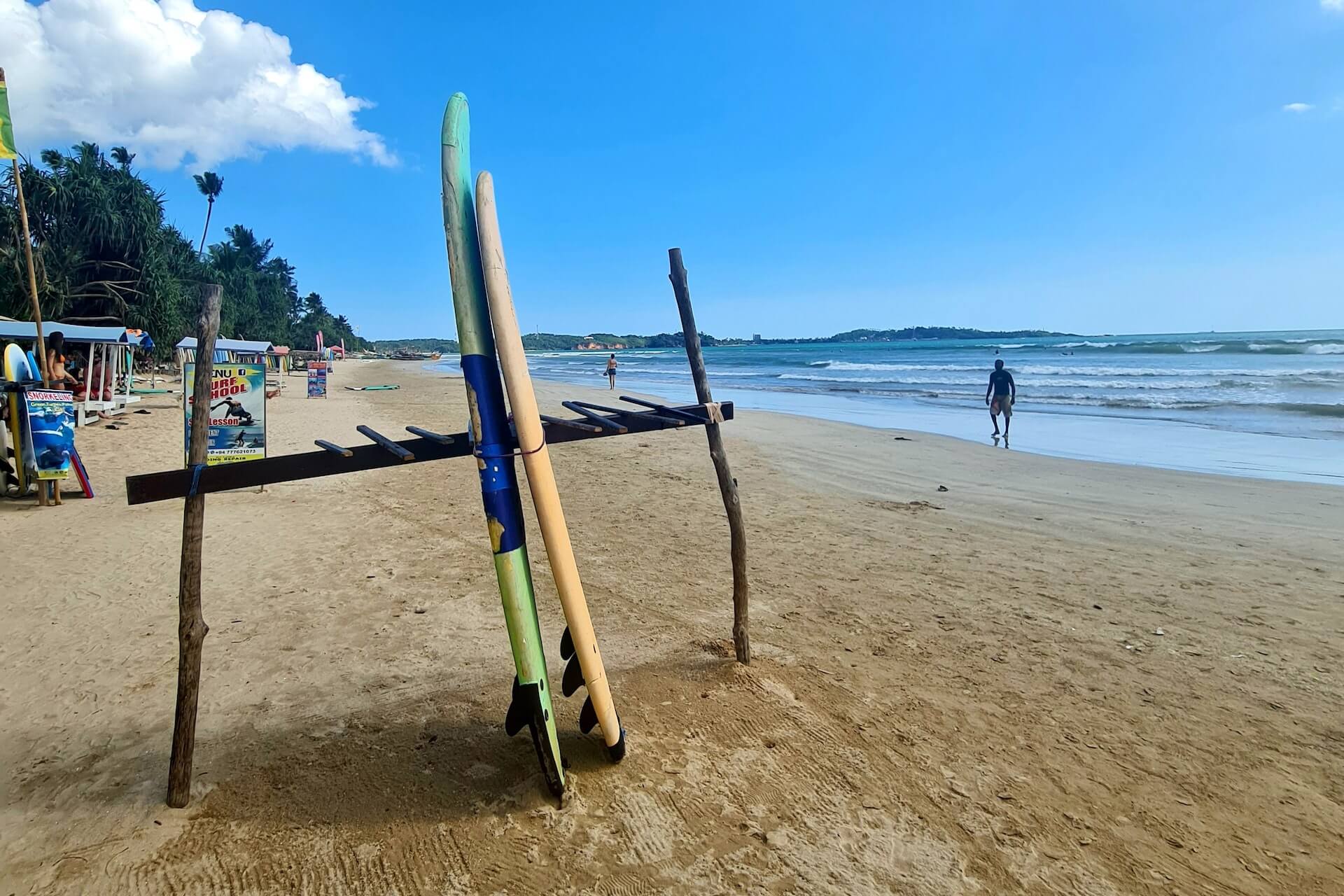
This three-kilometer coastal strip, located 150 km south of Colombo, is almost unaffected by strong monsoon winds. The continuous gentle waves discourage those who prefer calm waters but are perfect for learning to surf and practicing simple maneuvers. All conditions are created for beginner surfers here: surf schools (including Russian-speaking ones), equipment, and board rentals.
Weligama is a young resort with underdeveloped infrastructure. Locals are only vaguely familiar with shopping, so don’t forget to pack essential medicines and hygiene supplies. The choice of hotels is also limited—either luxurious, expensive five-star complexes with ocean views or cheap guesthouses located in the village.
Arugam Bay

This is another competitor among Sri Lanka’s beach areas, known as one of the best vacation spots in the world. Arugam Bay, located in the eastern part of the country, is open around the clock. Entry is free, much to the delight of tourists and locals who love to relax in comfort.
Once, the coast of the bay was just a poor fishing village, but it soon attracted athletes and water sports enthusiasts. Investors then took notice, quickly transforming it into a well-developed resort area where national and international surfing competitions are held.
Tip for those who prefer quiet relaxation: check the dates of such events beforehand and avoid planning your visit during that time, or be ready to join the sports crowd if you change your mind. During competitions, the area is packed, and the parties go on from sunset to sunrise.
The wide coastal strip with light yellow sand is perfect for group gatherings, but romantics also feel quite comfortable here. An important advantage of this place is the surf spots suitable for beginners. If you plan to learn or teach a child (or adult) to swim, it’s better to choose the southern part of the bay for this purpose.
Uppuveli
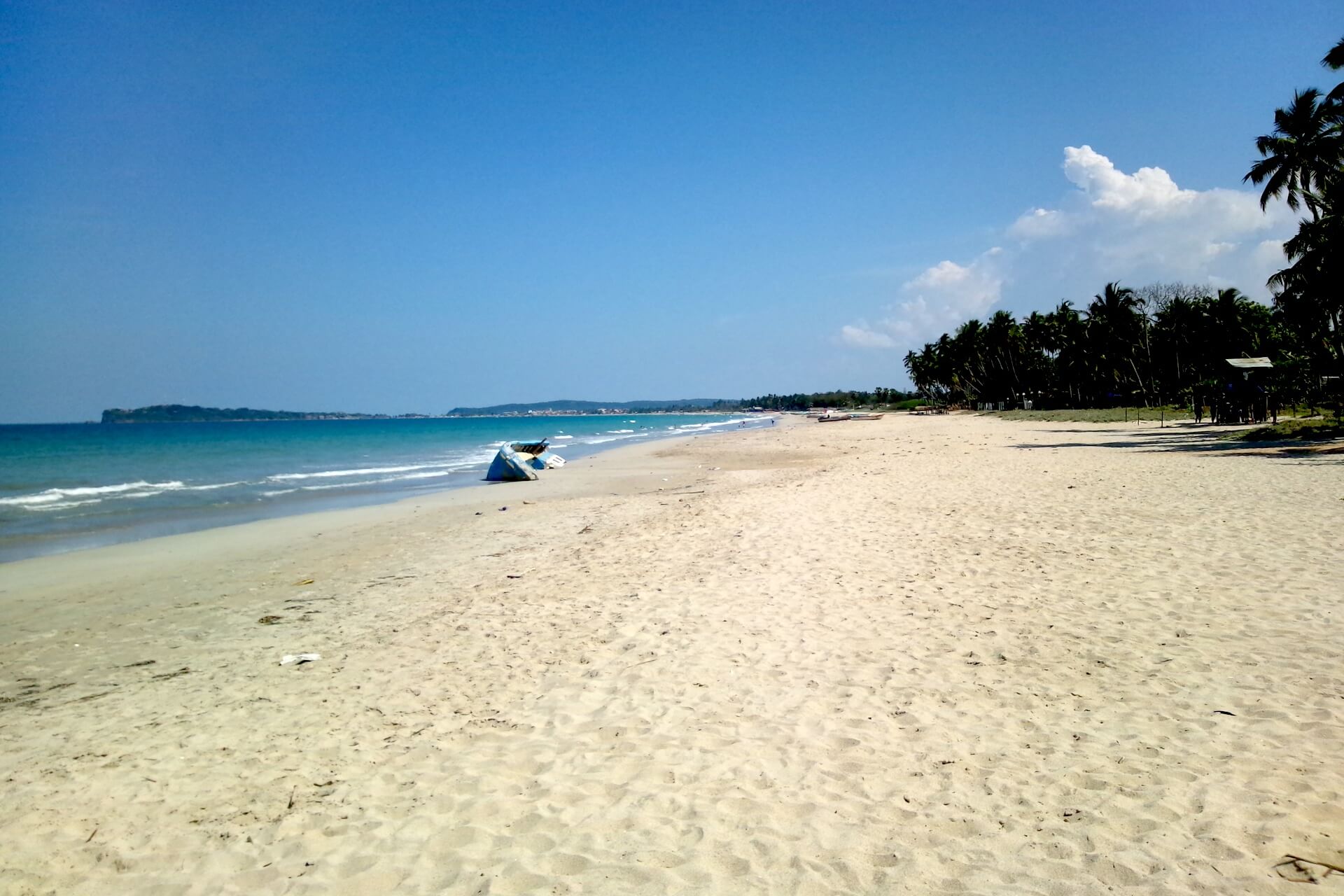
If you seek a serene retreat far from civilization, head to Uppuveli village, located 6 km from Trincomalee in the northeast of the island. There are no luxury hotels, famous Ayurvedic centers, or expensive restaurants—tourists come here for budget accommodations, local color, deserted beaches, and calm waters protected by a coral reef.
Besides sunbathing and water activities, Uppuveli offers its guests nearby attractions. The areas around Trincomalee are sacred to Sri Lankans practicing Buddhism and Hinduism. Here, you can find the ruins of the Velgam Vihara Temple, built in the 1st century AD, the 120-meter-high Koneswaram Temple, Fort Frederick from the 17th century, and the sacred hot springs of Kanniya, believed to have been created by the god Vishnu.
Nilaveli
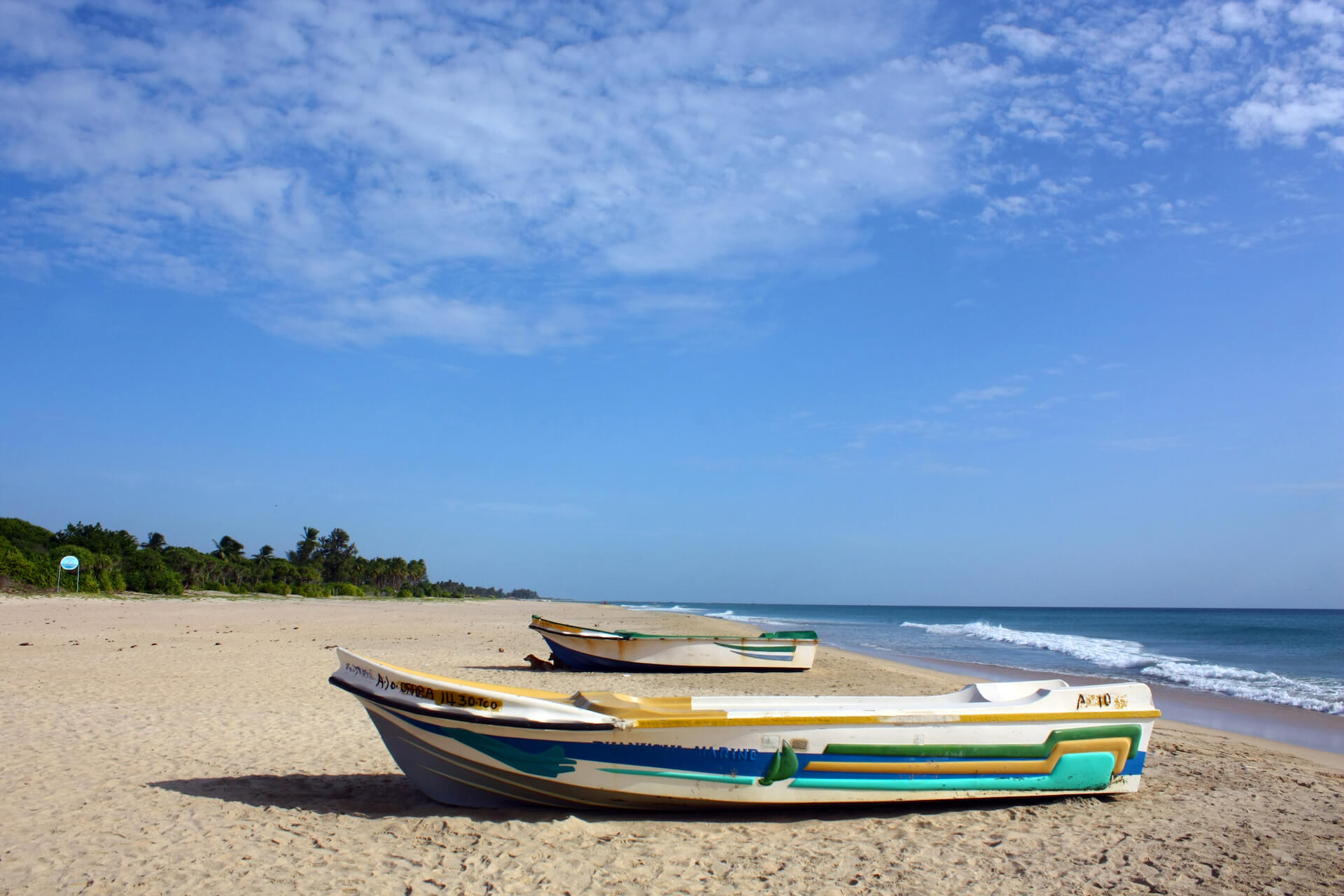
This resort area in the northeast is considered one of the most beautiful and least crowded places. It is a small fishing village with a developed tourist infrastructure, and the locals’ attitude towards foreigners is more akin to Swiss calm hospitality rather than the traditional Asian bazaar atmosphere.
Nilaveli is just 1 km from the famous Pigeon Island, part of a national park. Visiting this unique natural attraction is easy by renting a boat or hiring a guide directly on the beach. The beach area is close to bustling ocean traffic, but this doesn’t bother tourists.
The water and sand here are clean, with almost no stones or seaweed on the bottom. The proximity of the jungle is palpable, with encounters with snakes, lemurs, and monkeys not being uncommon. Another feature of this place is the convenient gentle water entry, making it a favorite for family tourists and beginner swimmers.
Several diving clubs operate in the area, offering affordable sports equipment rentals. The only major downside, according to travelers, is the occasional presence of herds of cows and stray dogs. The animals are peaceful but boldly beg for treats and attention (petting, kind words), which not all tourists appreciate.
Beruwala
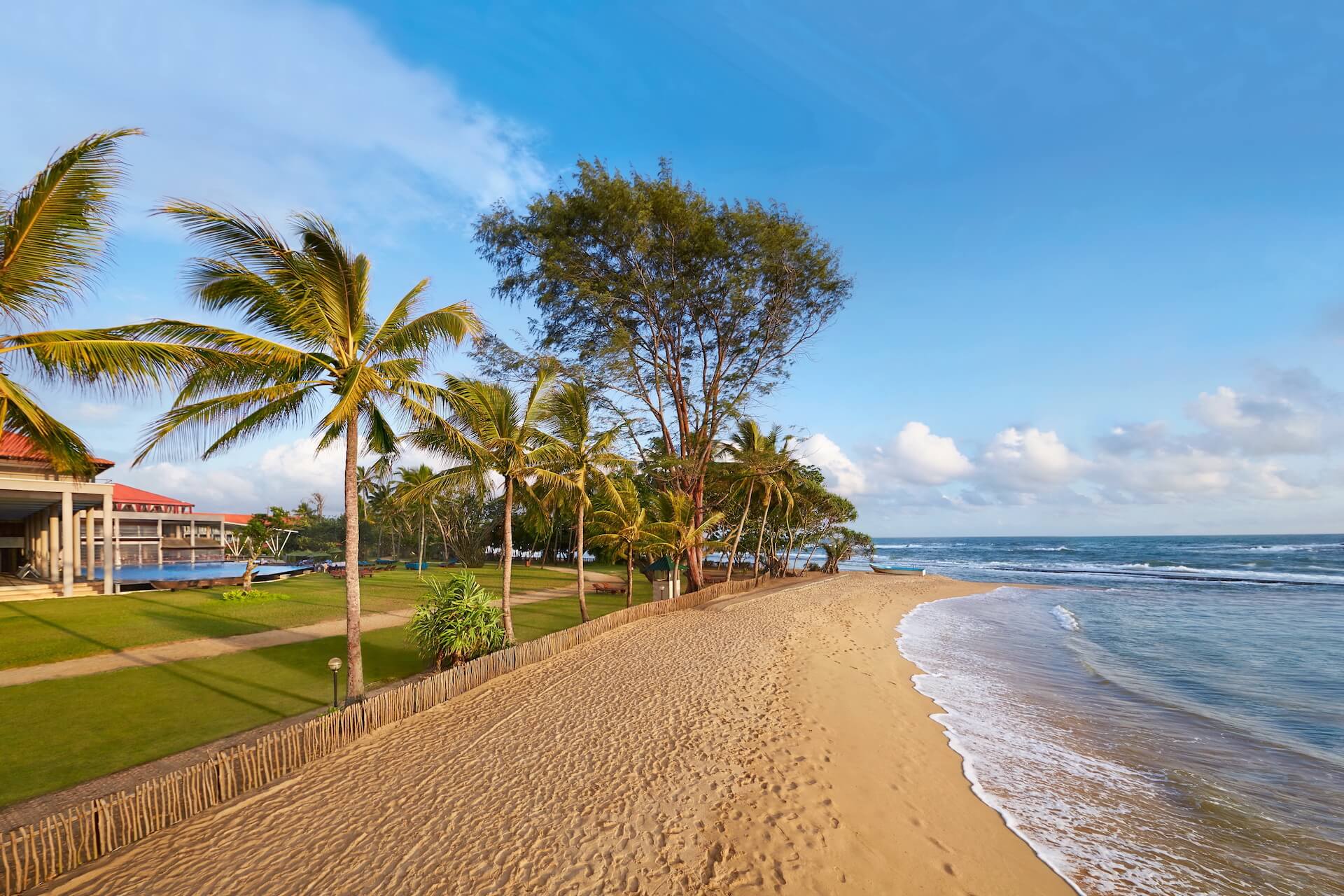
The town of Beruwala, located 79 km from Colombo Airport, combines the charm of fishing villages with their tranquility, positivity, and national color, and the vibrancy of a modern resort known for its variety of accommodations, from simple guesthouses to large all-inclusive hotel complexes. The main attraction of Beruwala is its beaches.
The coastal strip, up to 100 meters wide and lined with palms and sapphire-colored waves, is considered one of the most beautiful in the country. Families with children appreciate the gentle water entry, providing ideal conditions for swimming and play.
Parallel to the shore lies a reef, home to colorful fish and giant sea turtles, attracting diving enthusiasts. A unique feature is the mouth of the Bentota River, which offers boat rides among mangroves to see crocodiles.
Induruwa
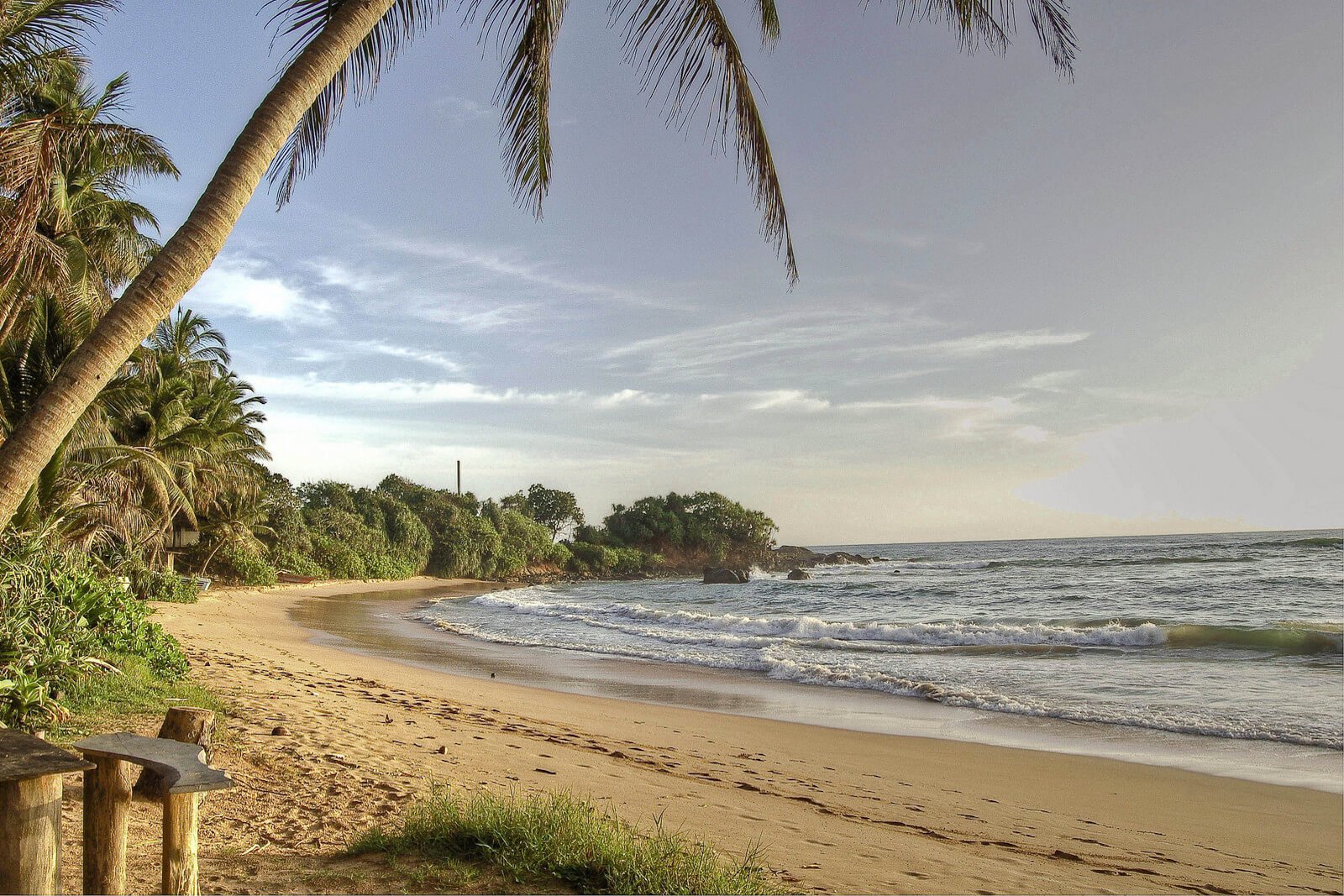
The sleepy village of Induruwa on the west coast features a 4 km long deserted beach lined with palm and mangrove trees, with several hotels catering to medium and high-income guests. The wide beach with soft light sand is perfect for strolls, but the ocean shows its strength and untamed nature here. Those who enjoy swimming should head to the picturesque lagoon nearby.
Do not expect much from Induruwa’s infrastructure. A few cafes, a market, and small shops are all the resort offers travelers. If you want to diversify your holiday, explore the city’s surroundings. Nearby is a turtle farm where you can observe newly hatched baby turtles. Local tour bureaus also offer boat trips on the Madu River, home to monkeys, crocodiles, monitor lizards, and exotic birds.
Ahungalla
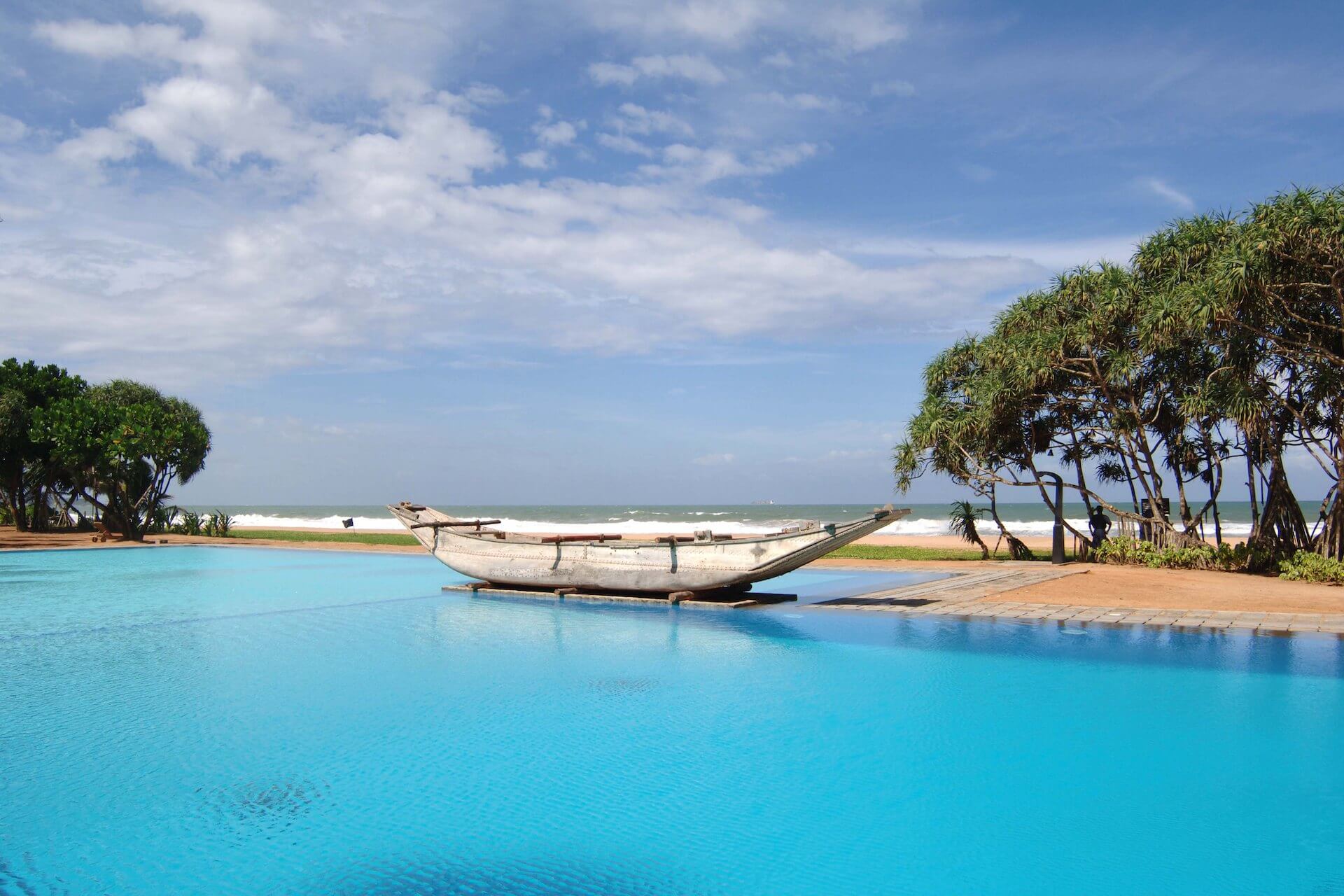
Picturesque palm groves and a 2.7 km long paradise beach on the southwest of the island create the serene atmosphere mega city dwellers dream of. This place is ideal for swimming in crystal clear water, diving, and leisurely walks along the coast. On your way, you’ll encounter crabs of all sizes, and if you’re lucky, loggerhead turtles rushing to lay their leathery eggs in the golden sand.
If you choose Ahungalla, be sure to visit the Kande Vihara Temple, located 20 km away, home to the world’s largest sitting Buddha statue. Those looking to improve their health can undergo treatments at the Ayurvedic center, where ancient healing methods for body and soul are practiced. Active holiday enthusiasts won’t be bored either, with rock climbing, rafting, fishing, and parasailing on offer.
Ambalangoda
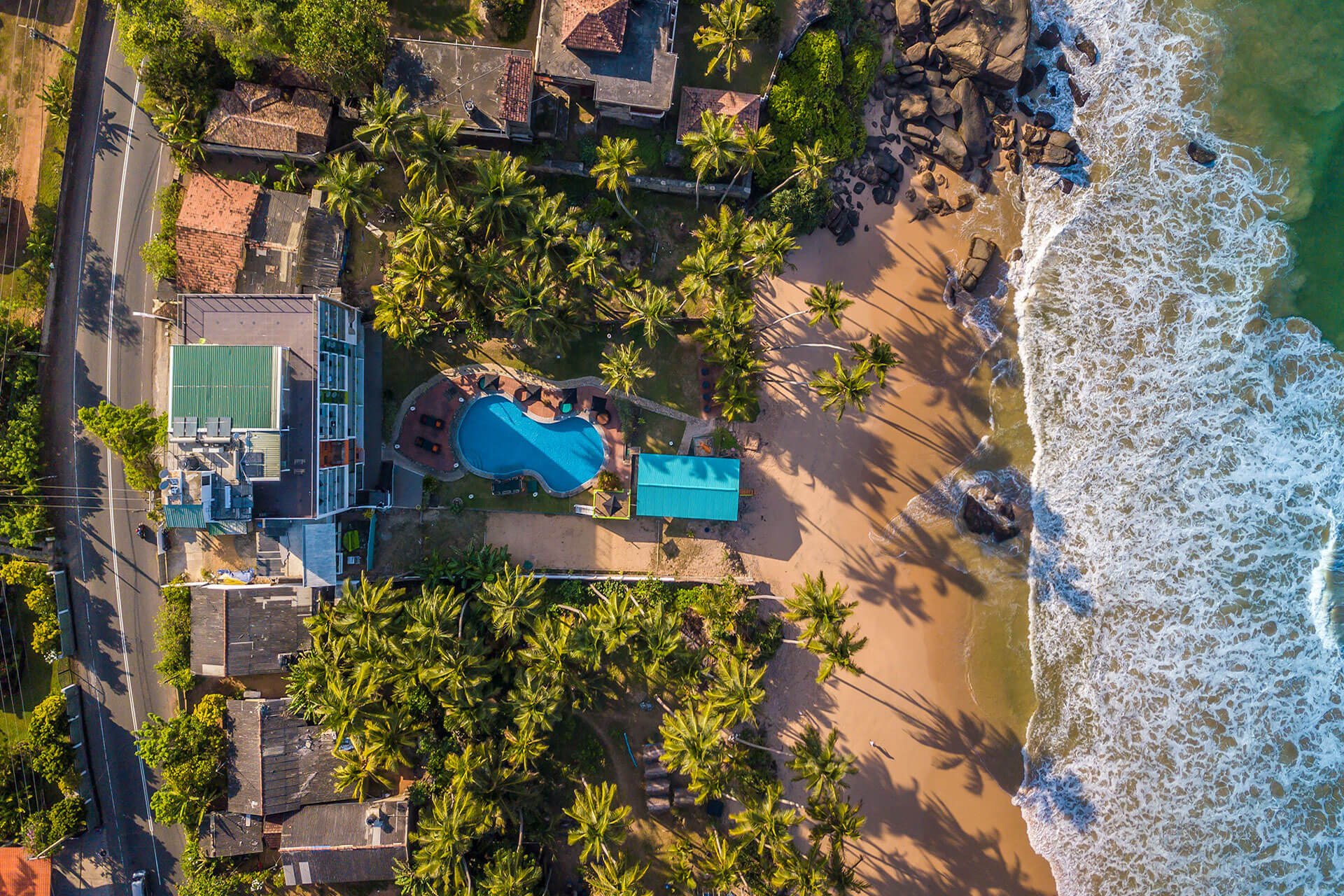
Both the resort and the town bear this name. It’s a cozy, charming place in the west of the country, primarily for exotic lovers, those seeking quiet, secluded rest, and those looking to save money.
In Ambalangoda, it’s hard to distinguish between the city’s boundaries, the beach area, and local attractions, as everything is tightly intertwined. A typical example is that you can easily combine a visit to the mask and doll museums with beach relaxation and shopping on the old streets.
You can also arrange a gourmet tour of the restaurants offering fresh seafood dishes. The recreation area is next to a Buddhist temple, so you can pray (remember to wear body-covering clothing for such occasions). And right on the beach, you can buy herbal medicine collections gathered in the jungle from vendors.
The palm trees and bright flocks of birds will constantly remind you of the jungle. There are almost 400 species of birds here, most of which are travelers themselves, seasonally migrating from Scandinavia and back.
Narigama

This recreation area is part of Hikkaduwa but is often listed in tourist guides as a separate territory. This is due to the historical characteristics of Narigama and the mentality of the locals. Knowing that access is free, Sri Lankans decided to divide the coastal area into several zones, but they ended up confused about the land boundaries themselves.
The beach is south of Hikkaduwa Beach and stretches for 4 km. The first beach is 1.5 km long, and together they form Greater Hikkaduwa. What’s the difference between Narigama and its smaller neighbor? The yellow sand here is coarser, and the water entry is slightly gentler, according to locals. In practice, it’s almost true, but the northern part of Narigama has a rocky bottom that drops off suddenly, making water entry dangerous.
Narigama occupies the area between the cape and the residential area of Dodanduwa, where rental prices are quite moderate. Hotel rooms are also plentiful, so haggle and remind the administrators about discounts. If you follow this strategy, you can save up to 15-20% on accommodation.
Jungle Beach
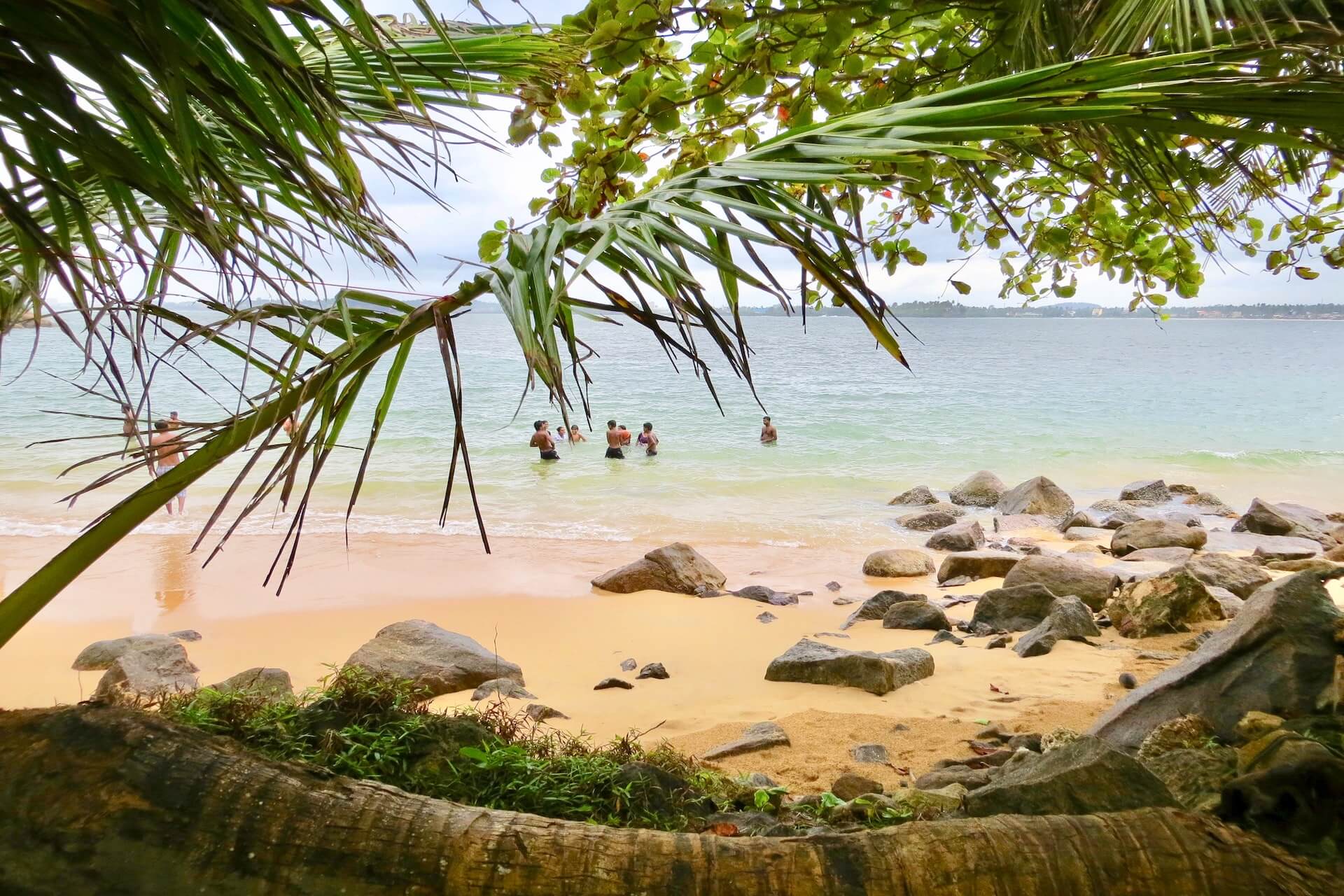
South of Colombo, 76 km from the airport, Unawatuna has been delighting tourists for many years—a popular resort with developed infrastructure, pristine nature, and a wide selection of affordable hotels. The oceanfront features a quiet bay protected from the raging waves by a double coral reef.
Surfing enthusiasts might find it boring here, but family couples can safely come to Unawatuna without worrying about their children. Unawatuna has a secret spot located 1 km from the main beach. Hire a tuk-tuk taxi, and it will take you to a true paradise surrounded by Roomassala jungles.
The coastal strip, 100 meters long, seems to have come straight out of “Bounty” advertisements. The ocean surprises with its unusual green color and calm demeanor. Waves are rare guests at Jungle Beach. Despite its secluded nature, everything is prepared here for tourists’ convenience: sun loungers are set up under palm trees, and there are shower cabins, toilets, and a cafe on the territory.
Polhena
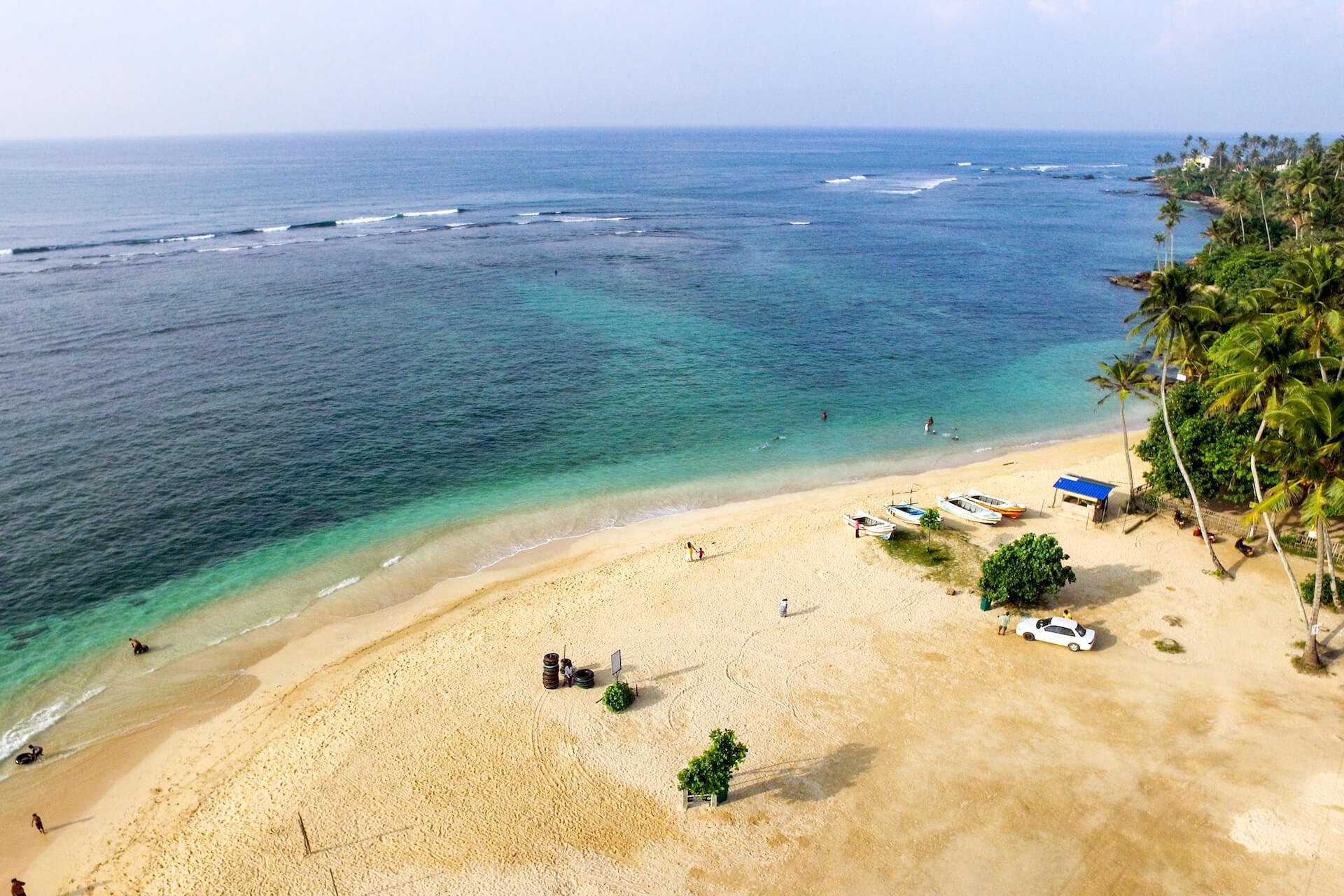
In the heart of Matara—the largest city in the south of the country—a chain of small beaches stretches along the shore, collectively known as Polhena. All of them are protected from the raging elements by a 4-kilometer coral reef, so there are no waves here even during the monsoon season.
This area is popular among both tourists and locals. Sri Lankans are afraid of the open ocean and prefer to swim in the calm bay, reminiscent of a large lake. A significant advantage of relaxing in Polhena is its proximity to civilization.
In Matara, you’ll find shops, restaurants to suit all tastes, cinemas, museums, nightclubs that rival European ones, and interesting landmarks: the Shrine of Our Lady, Dondra Lighthouse, Veherahena Buddhist Temple, and a snake farm. Moreover, the city is an important transportation hub in the country—from here, you can embark on a short trip to nearby Dickwella, Mirissa, and Weligama.
Dickwella
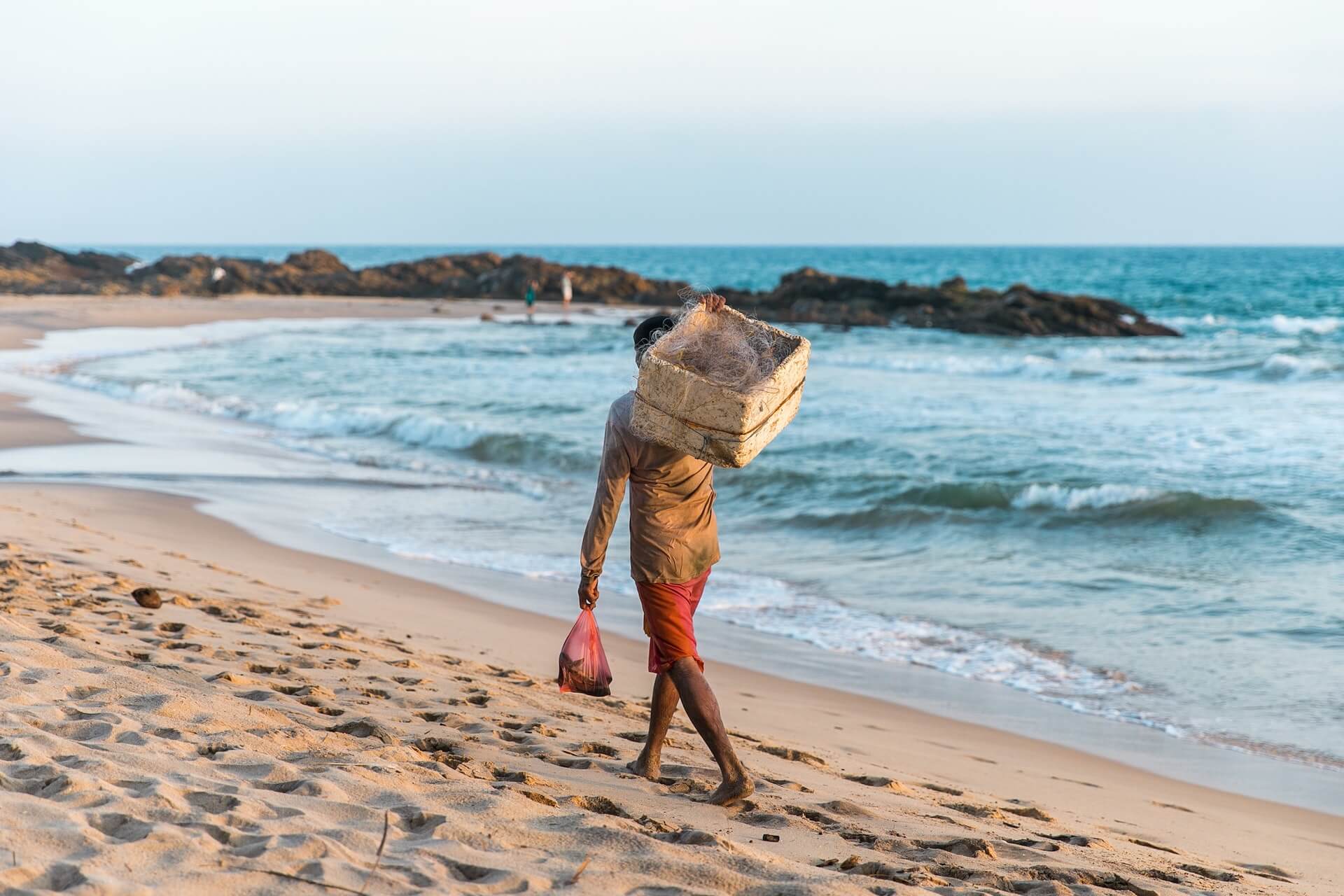
Compared to other recreational zones, this area and the village of the same name in the southern part of the country seem toy-like. Fans of noisy parties and nightclubs do not favor this place. Travelers come here solely for peace, quiet, natural beauty, and the light brown healing sand with rejuvenating properties.
The term “Dickwella” usually refers to three beaches at once. The main one stretches for 2.5 km. Nearby are local attractions: an ancient Buddhist temple and a giant Buddha statue. Additionally, the resort has an interesting natural monument: a 20-meter non-man-made fountain that produces howling sounds as it rises.
Only the smallest of the three Dickwella beaches is suitable for relaxing with children, as there are no big waves and the water entry is gentle. The western bay is rarely chosen for relaxation due to the strong winds prevailing there. However, it is worth visiting (not for swimming but to enjoy the splendor of tropical nature). It is empty and romantic at any time of day.
Batticaloa
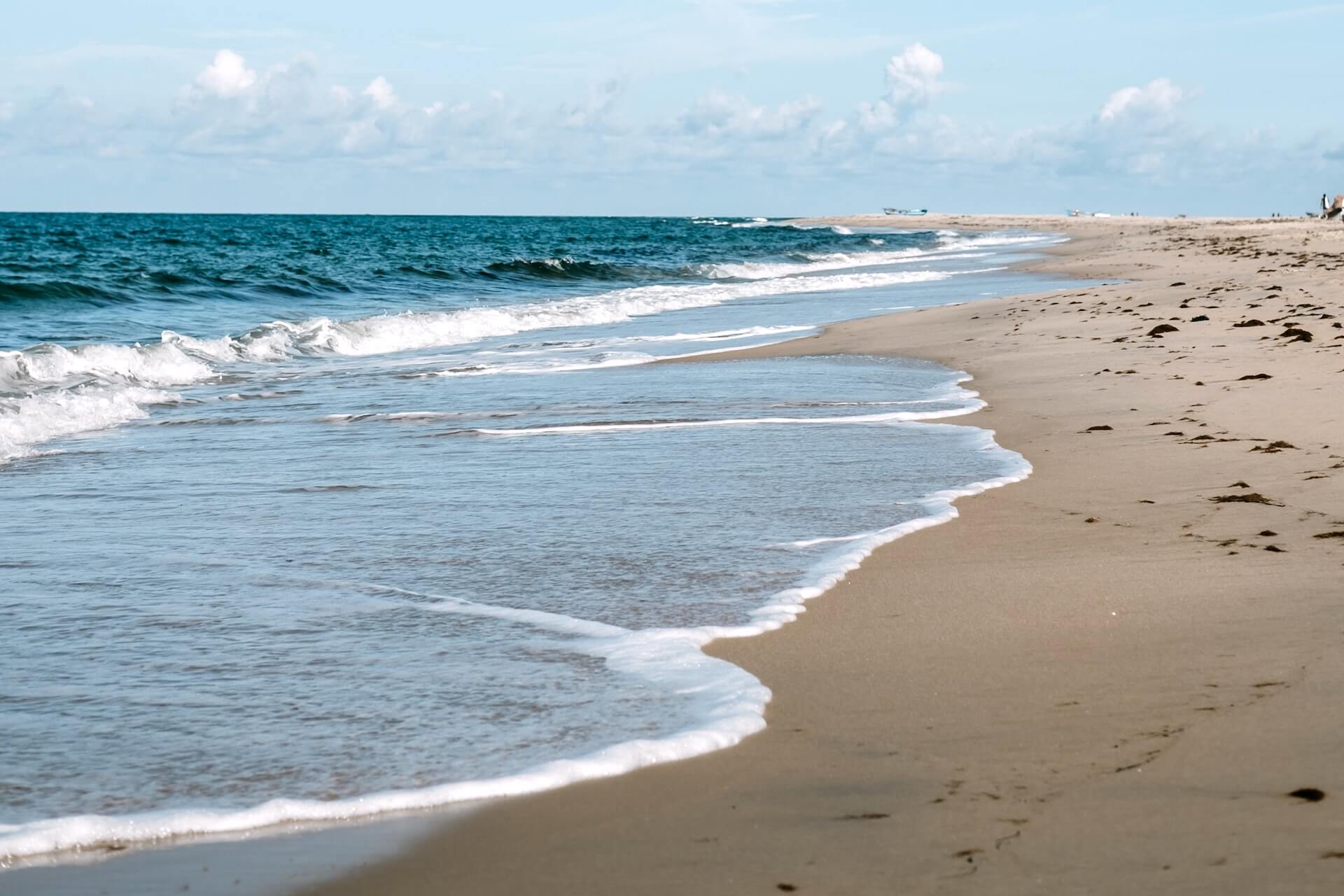
Relaxation enthusiasts and those who believe in places of power love to rest here. According to Sri Lankan legends, there is much mysticism and many beautiful places here. However, keep in mind that this area is not purely tourist-oriented. The city lives its own life, and tourism revenue is not the main source of income for locals.
The coastal areas are clean and deserted. A significant plus is the clean and gentle water entry, with non-intrusive Sri Lankan fishermen. They will always help you find reasonably priced cafes and restaurants with good food and competent guides.
Experienced travelers suggest buying fish from these fishermen if you cook it yourself; fresh seafood will cost much less than in a store or market.
The coolest zone here is considered to be Kallady. The reason: a nearby luxurious hotel where you might meet world stars. And the place itself has a special charm, coziness, and romance. A significant plus: even on this fancy beach, you can rent a boat to visit nearby national parks with numerous natural and historical monuments for a nominal fee.
Kahandamodara
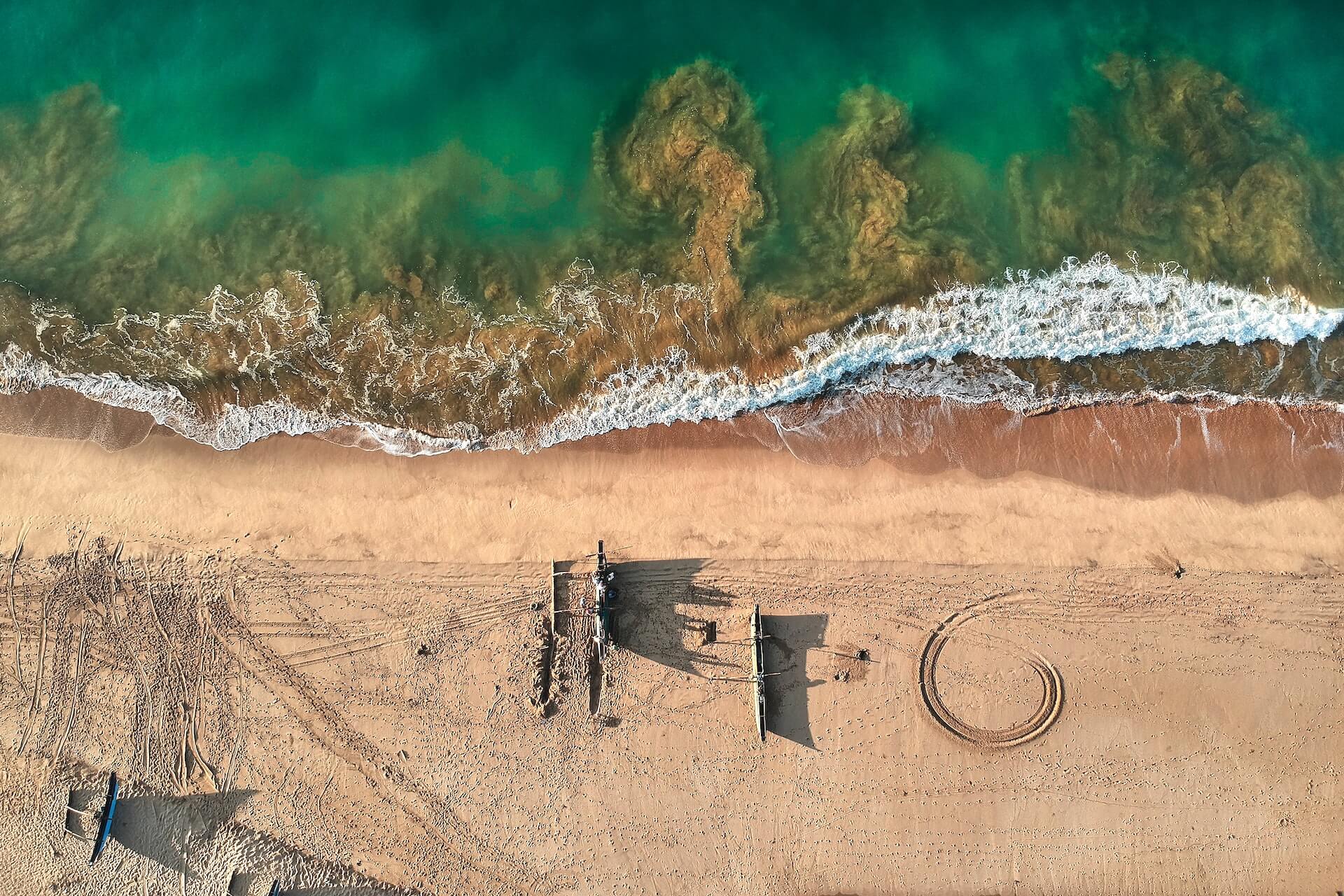
This is another interesting place in the south of the country, intended for those who appreciate secluded rest, where the body and soul need only the sound of waves, birdsong, and endless summer. Both a city and a province bear this name. Tourists mainly come here to see historical monuments, visit Buddhist temples, and get advice from wandering monks on various life issues.
A major advantage of the resort is that it is not heavily advertised. Wealthy Sri Lankan families mainly rest here. At the same time, the prices for renting villas and hotel rooms on the first coastline are very pleasing to foreign tourists.
The only downside is the absence of a well-developed beach infrastructure. Everything necessary is only available opposite the hotels, and there are entire stretches of the coast where, perhaps, no human foot has ever stepped.
Another important note: the local rescue service is not geared towards handling a large tourist flow. Therefore, experienced travelers warn: do not risk swimming in deserted places. And another piece of advice: do not feed the monkeys that steal hats, glasses, wallets, smartphones, and other valuable items. The primates behave very boldly, especially with tourists. Monkeys are considered sacred animals, and Buddhists (including law enforcement) will defend them in any situation.
Balapitiya
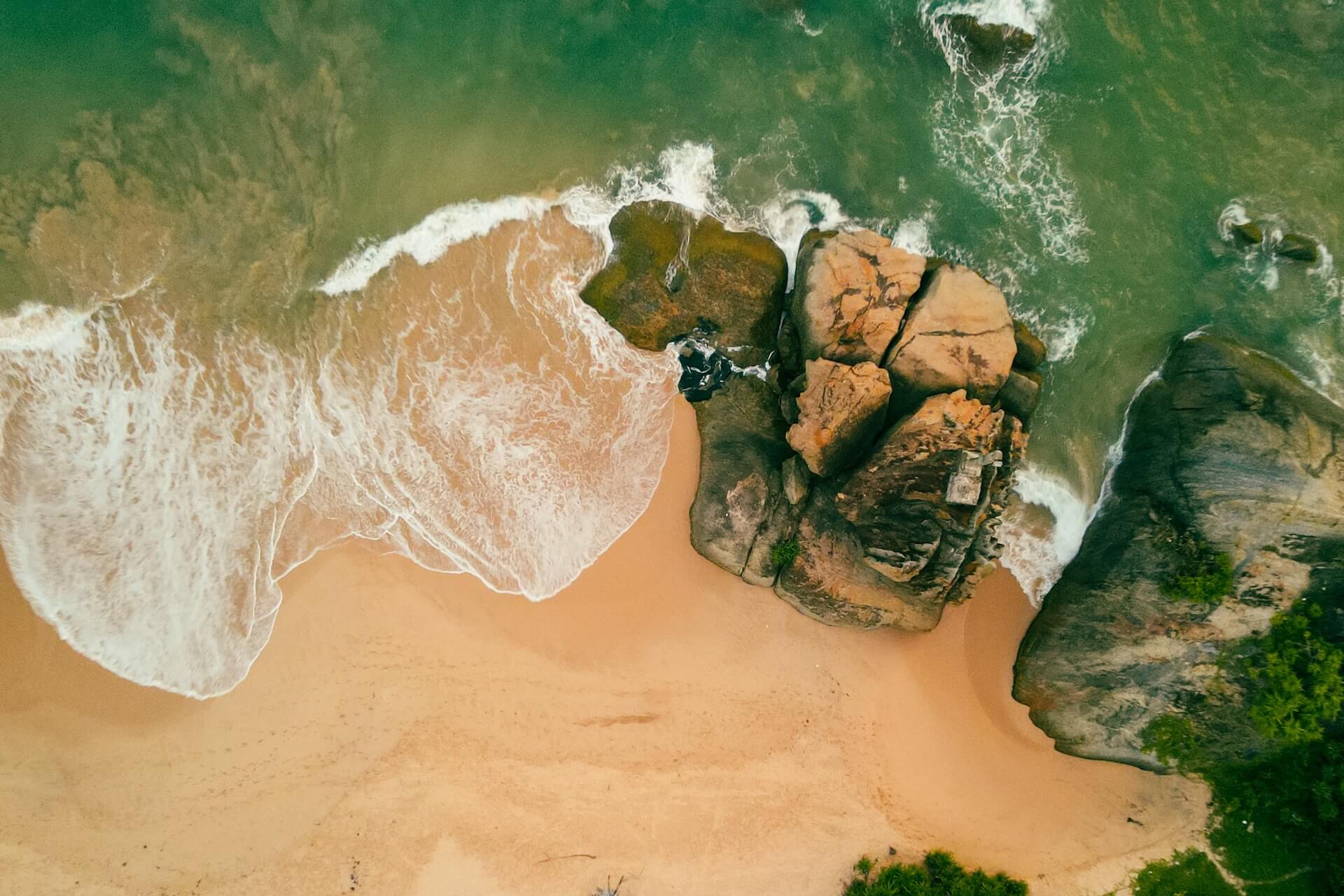
This place is often confused with Ahungalla, which is also located in the southwest of the Republic. This is a typical mistake made by many foreigners. It arises because the recreational zones are next to each other, and the first occupies more space than the second.
Balapitiya looks modest due to the absence of crowds of tourists and ubiquitous vendors selling treats and souvenirs. The sand here is a pleasant golden shade, and the water entry is even and gentle, but the waves are very strong. They pose a danger to inexperienced swimmers.
The sandy strip occupies about 1 km. Many palm trees grow on it, and a rocky massif rises in its southern part. Resting at Balapitiya is considered quite expensive, as mainly elite establishments operate here. Consequently, budget-conscious travelers rarely visit this place.
To be honest, despite the splendor of the local millionaires’ villas, this remains a typical Sri Lankan province with its way of life. And that is its main advantage, as it allows you to experience the untouched beauty of the wild tropical nature.
Passikudah
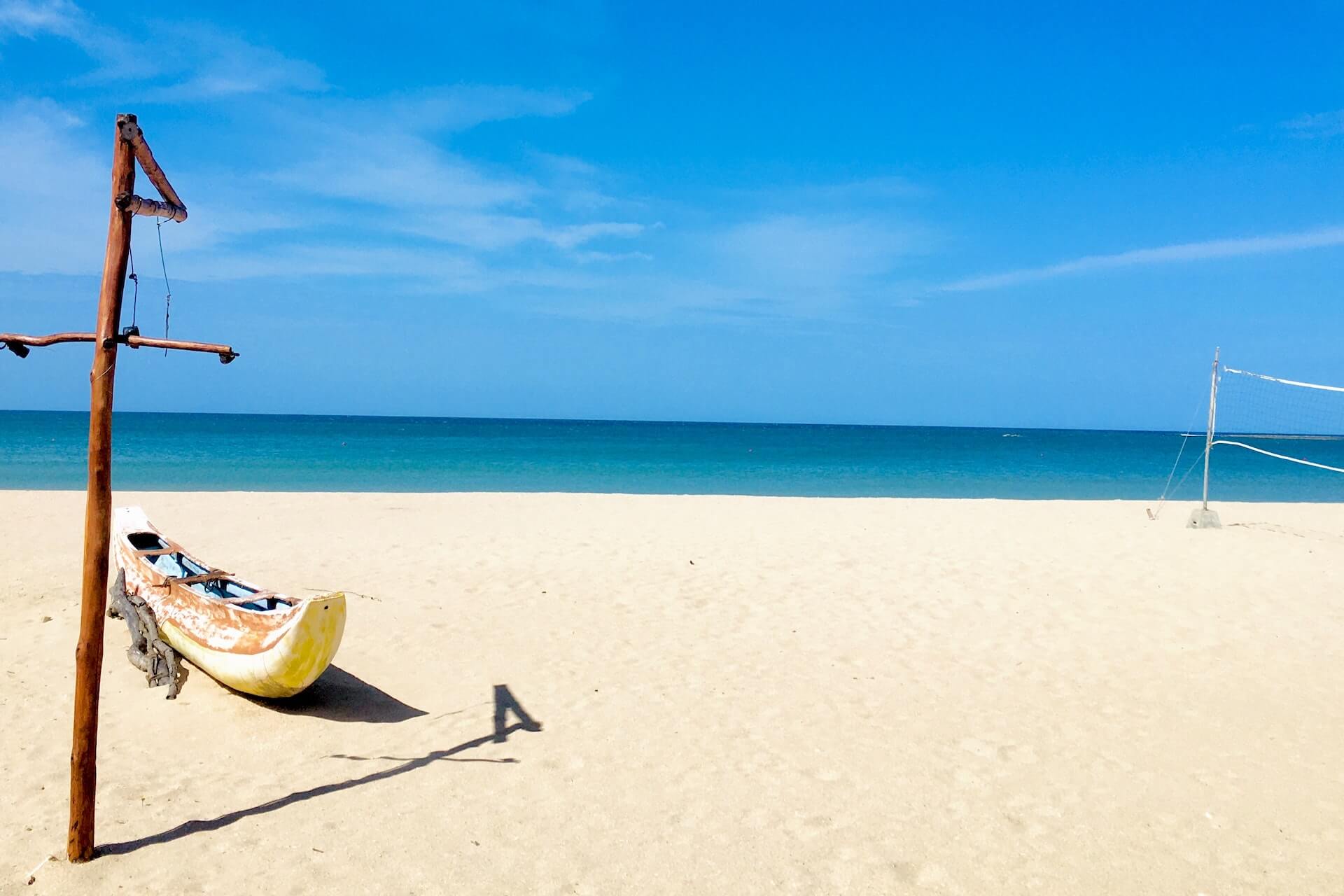
Once a typical Tamil village, Passikudah has grown into a resort town and become a favorite spot for romantic tourists and water sports enthusiasts. It is important to clarify that Passikudah is not part of Kalkudah, but the recreational zones are next to each other and are very well-maintained.
Both are perfect for family holidays. The most pleasant time for vacation (in terms of climate) is considered to be August. Diving and snorkeling enthusiasts constantly hang out here. Other significant advantages of Passikudah are the absence of noisy entertainment venues and a high level of safety for vacationers.
The beach area has numerous sports grounds and sports equipment rental points, but you need to walk 2 km towards Kalkudah to find the nearest ATMs, large stores, and restaurants. The water entry in Passikudah used to be more convenient. It is still almost the same, but there are now some sharp stones and coral fragments on the bottom in places. It’s best to swim here with special shoes to avoid cuts.
Midigama
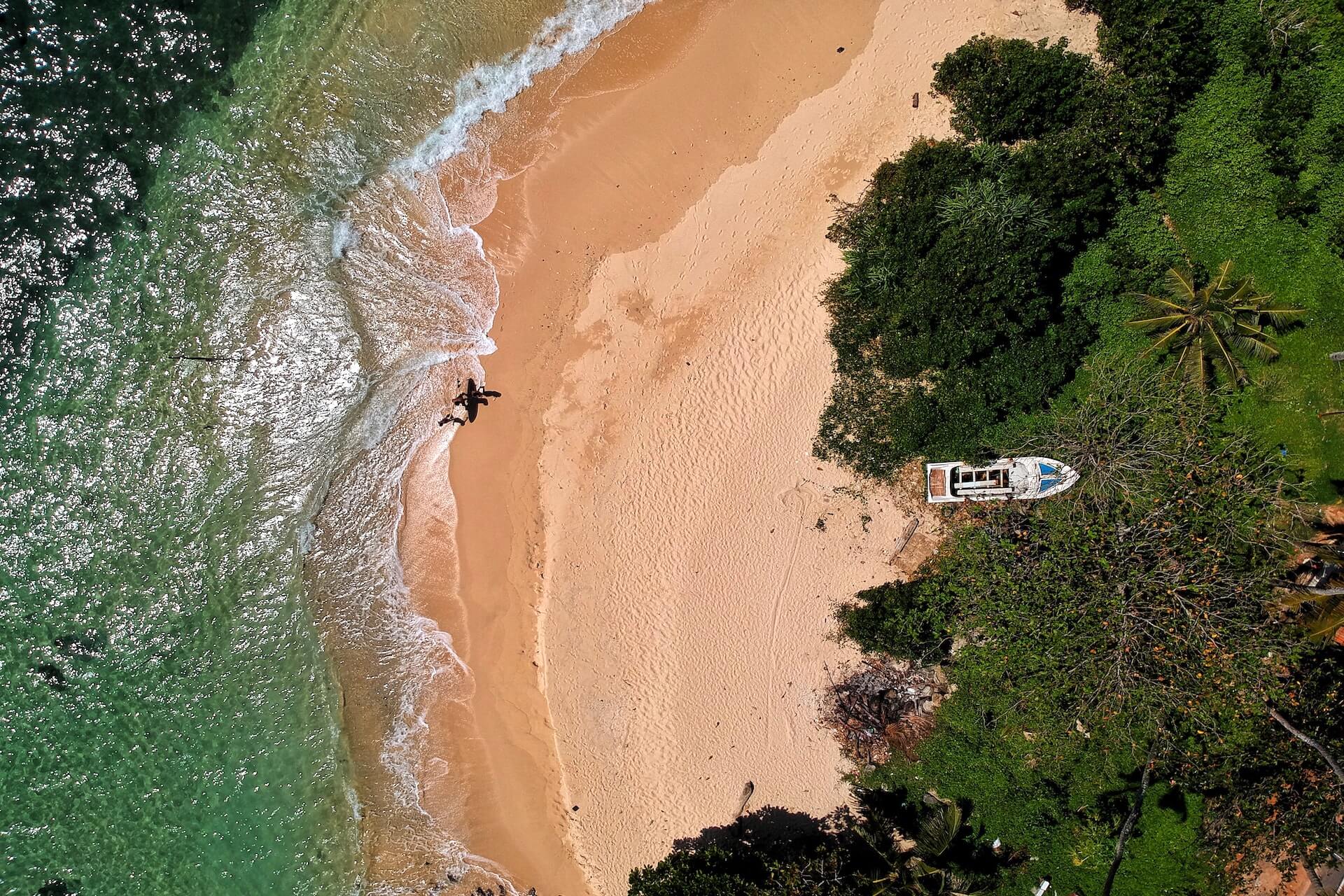
The recreational zone is located in the northern part of the island. It borders Weligama, causing some confusion with the names. The latter is a resort village built right on the sand and is also a popular tourist destination.
The best time to relax in Midigama is August, with a comfortable humidity and temperature ratio for foreigners. The easiest way to reach the beach is on foot from Weligama, a 300-meter walk. However, remember to take precautions: on your way to the beach, you might encounter snakes, monkeys, elephants, scorpions, and other wildlife, which Buddhists consider sacred and protect.
Interestingly, local guides and meteorologists call the period from January to April the most pleasant season for relaxing in neighboring Weligama, “forgetting” about August. This is more about the Sinhalese mentality than the weather.
The dominant ethnic group in the Republic agrees with scientists but superstitiously believes that each beach should correspond to one favorable relaxation month.
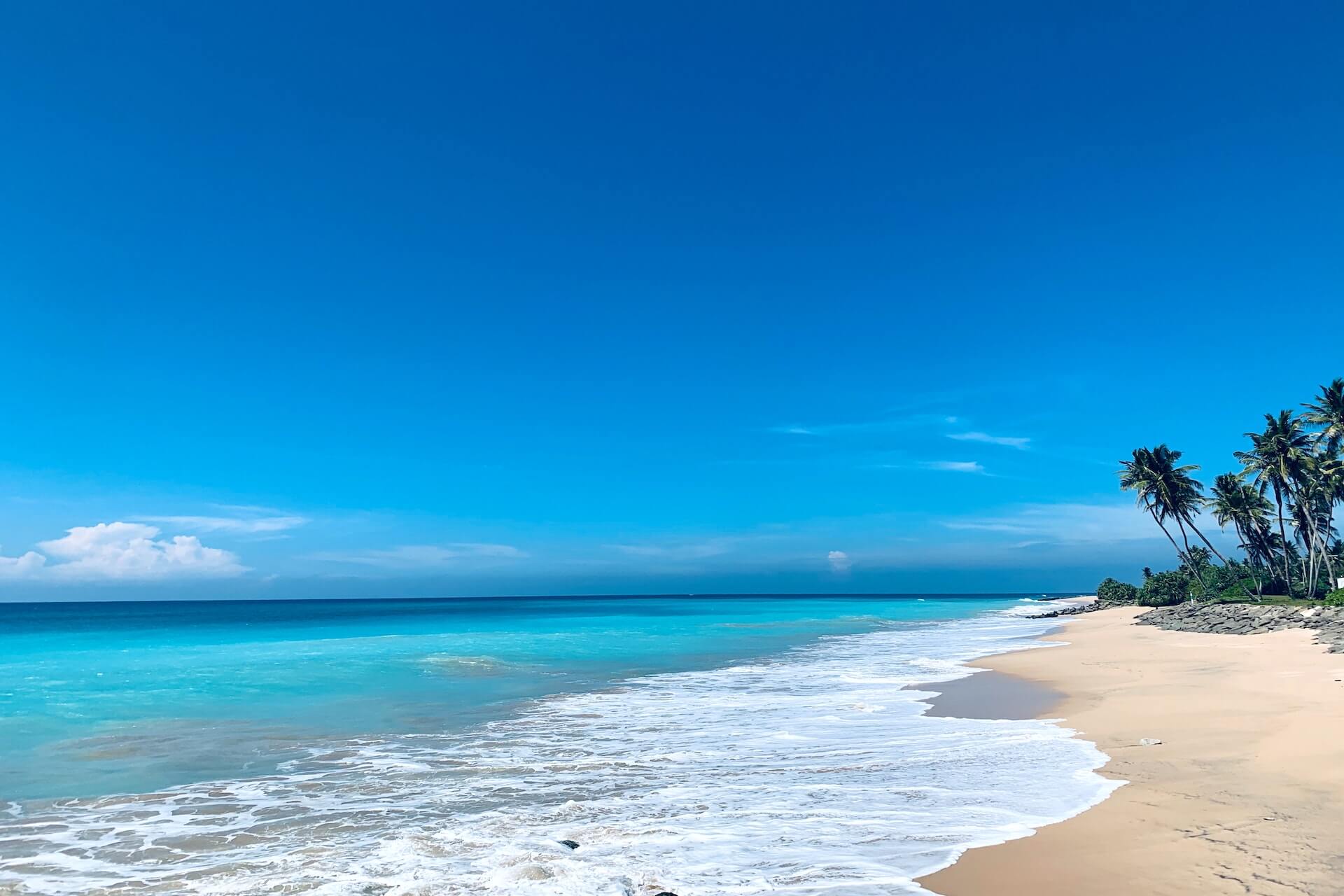
When choosing a suitable vacation spot, parents always consider the safety of the resort. This is particularly relevant for Sri Lanka. The island is surrounded by the ocean, meaning the coastal zone has few quiet places where your child can safely splash in gentle waves.
For family holidays, it is wiser to choose the few beaches protected from raging waves by reefs. Even during the summer months when monsoons rage on the southern side, the weather on the northeast side is comfortable and favorable for a family holiday. During this period, one of the best beaches for the younger generation is Nilaveli Bay—the most beautiful place on the northern coast, protected by a coral reef.
In addition to swimming and sunbathing, you can watch dolphins and whales here. If you have come to the country with a child, feel free to choose the cozy, calm beach near the Dickwella Resort SPA (Dickwella Bay) hotel. Thanks to a small cape, there are hardly any waves here.
Western Wadduwa and southern Unawatuna, known for their high water temperatures, minimal tides, and gentle entry into the calm ocean, are also popular among families.
To ensure your long-awaited vacation isn’t marred by constant worry about your children, familiarize yourself with the pros and cons of a vacation with kids before booking a tour.
Pros:
- Mild climate and slight temperature fluctuations.
- Consistently warm ocean water, free of poisonous jellyfish and dangerous marine creatures.
- Variety of historical and natural attractions. To see local wildlife (monitors, monkeys, turtles, mongooses), you don’t need to visit a zoo. Exotic animals often live near hotels and are not afraid of people.
- Numerous supermarkets offer the opportunity to buy familiar food.
Cons:
- The ocean is the main drawback. Most of the coastal zone is not protected from strong currents and huge waves, making it unsuitable for inexperienced swimmers.
- Exhausting flight. Using other airlines means a transfer in India, the UAE, or the Maldives, increasing the travel time by 3-10 hours.
- Food. Local cuisine is quite spicy and unfamiliar to American tourists, often unsuitable for children. Additionally, sanitary and hygiene conditions are not the best.
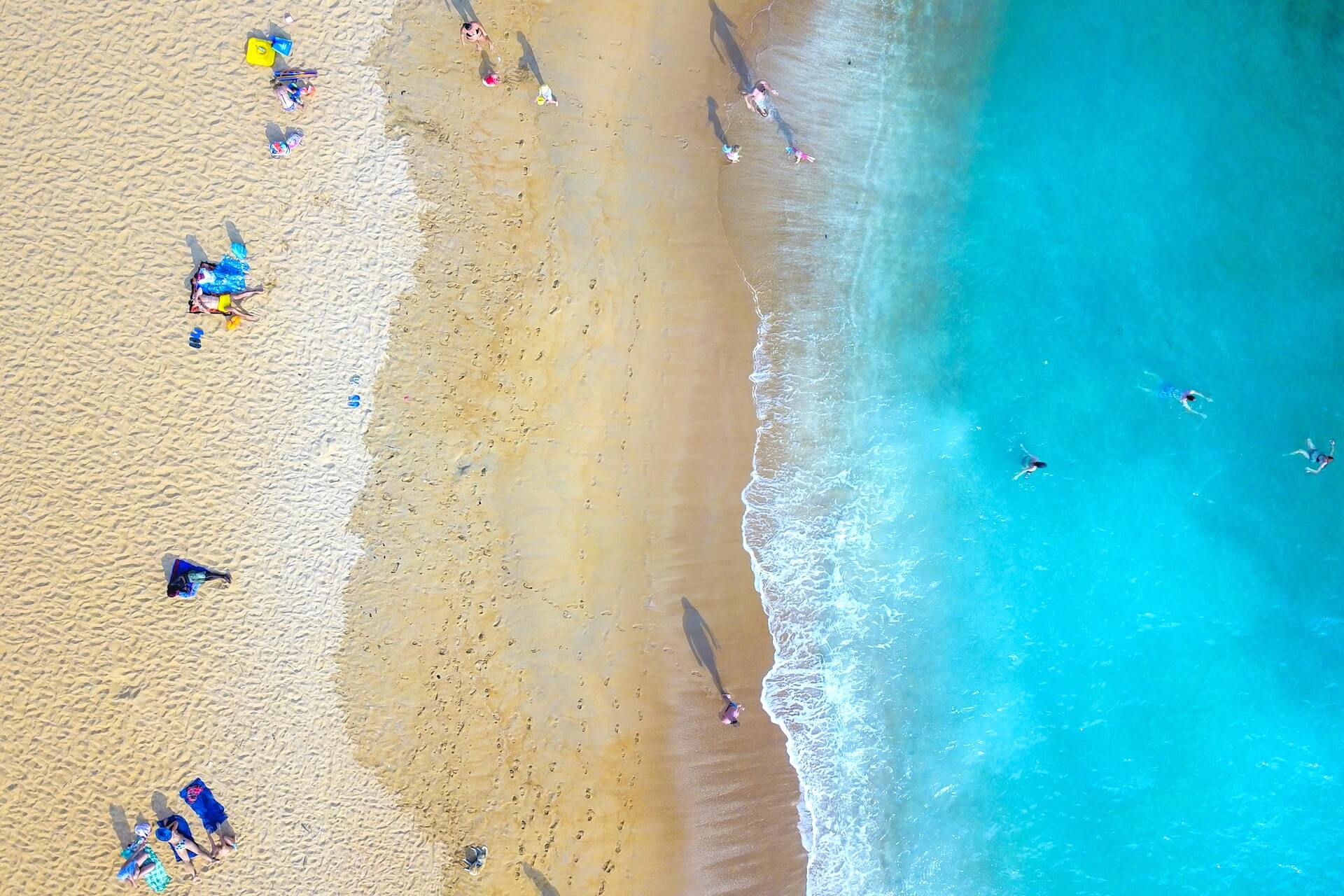
Throughout the island, the climate is warm and sub-equatorial (in the northeast) or equatorial (in the southwest), characterized by high humidity (70-90%). Temperatures remain stable year-round, ranging from +25 to +33°C. The ocean warms up to +30°C.
Like most tropical islands, Sri Lanka has only two seasons, formed by stable monsoon winds. They determine the storms and rains across the country. The highest rainfall occurs from mid-May to September when the southwest monsoon hits the western coast.
The sun often hides behind clouds, and wind speeds reach 5-8 m/s. The northeast part of the island experiences bad weather from June to October, brought by winds from China. Considering these climatic nuances, the optimal time to visit Ceylon is during the winter months. Daytime temperatures reach +31°C.
Ocean waters are equally warm, heating up to +28°C. Rain is rare during this time, with only brief showers at night. By April, temperatures start rising again. In May, clouds bring heavy rains. By November, the weather becomes comfortable and stable again, marking the start of the tourist season.

